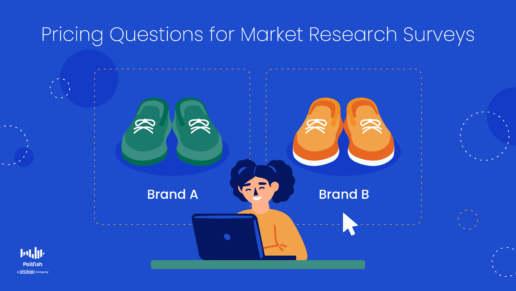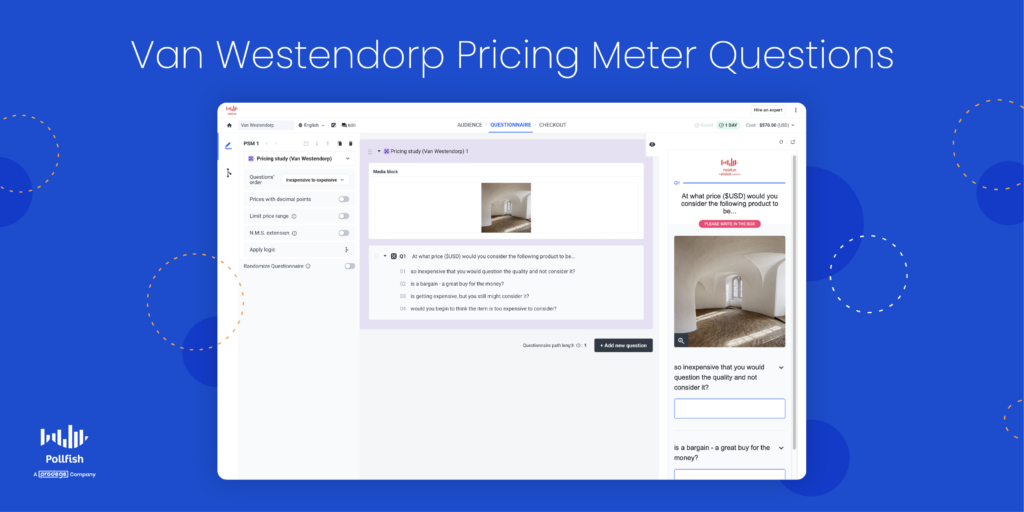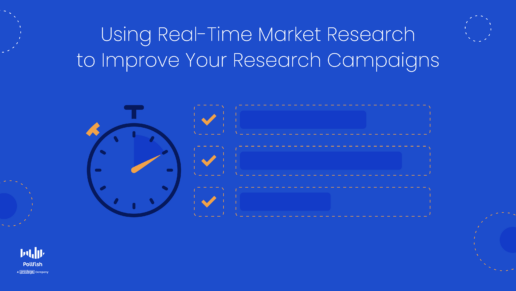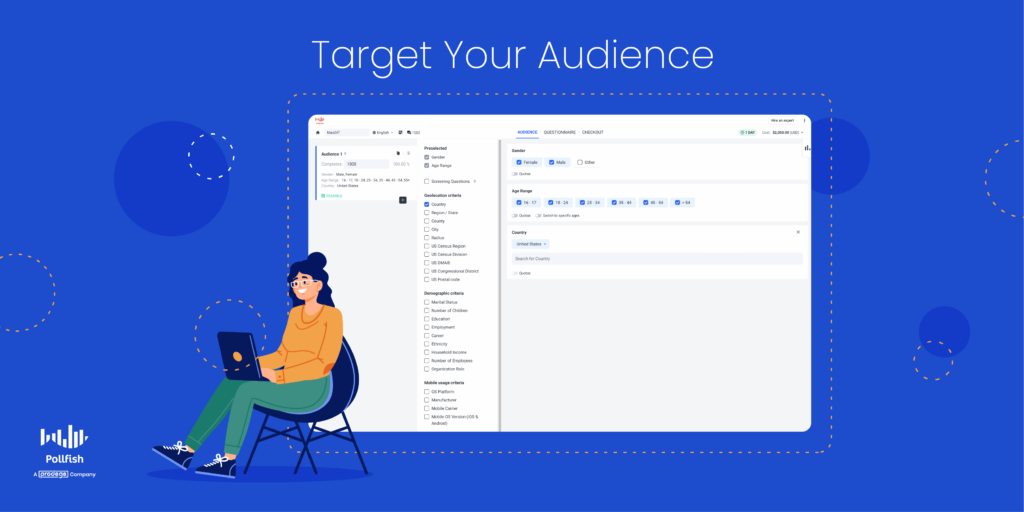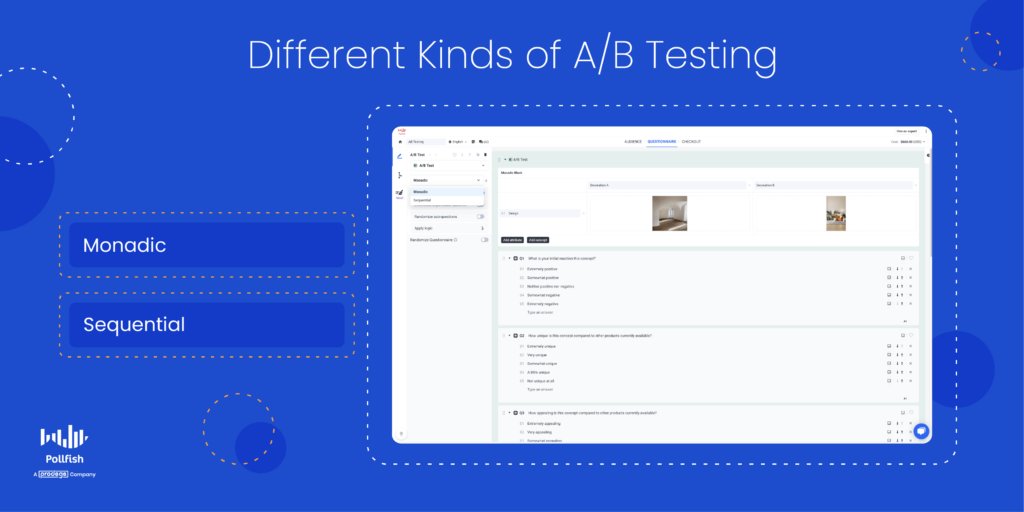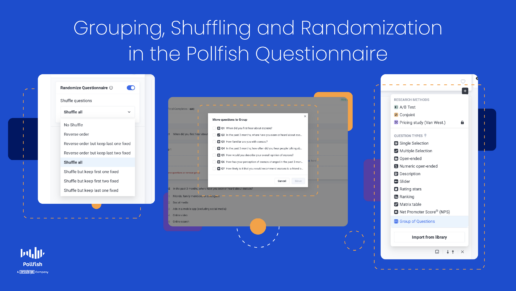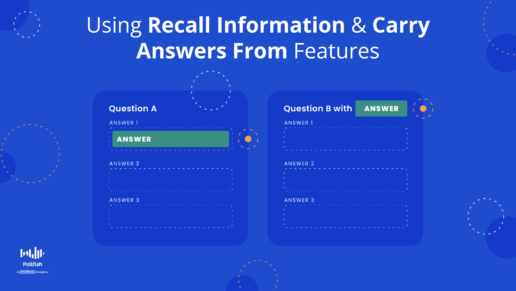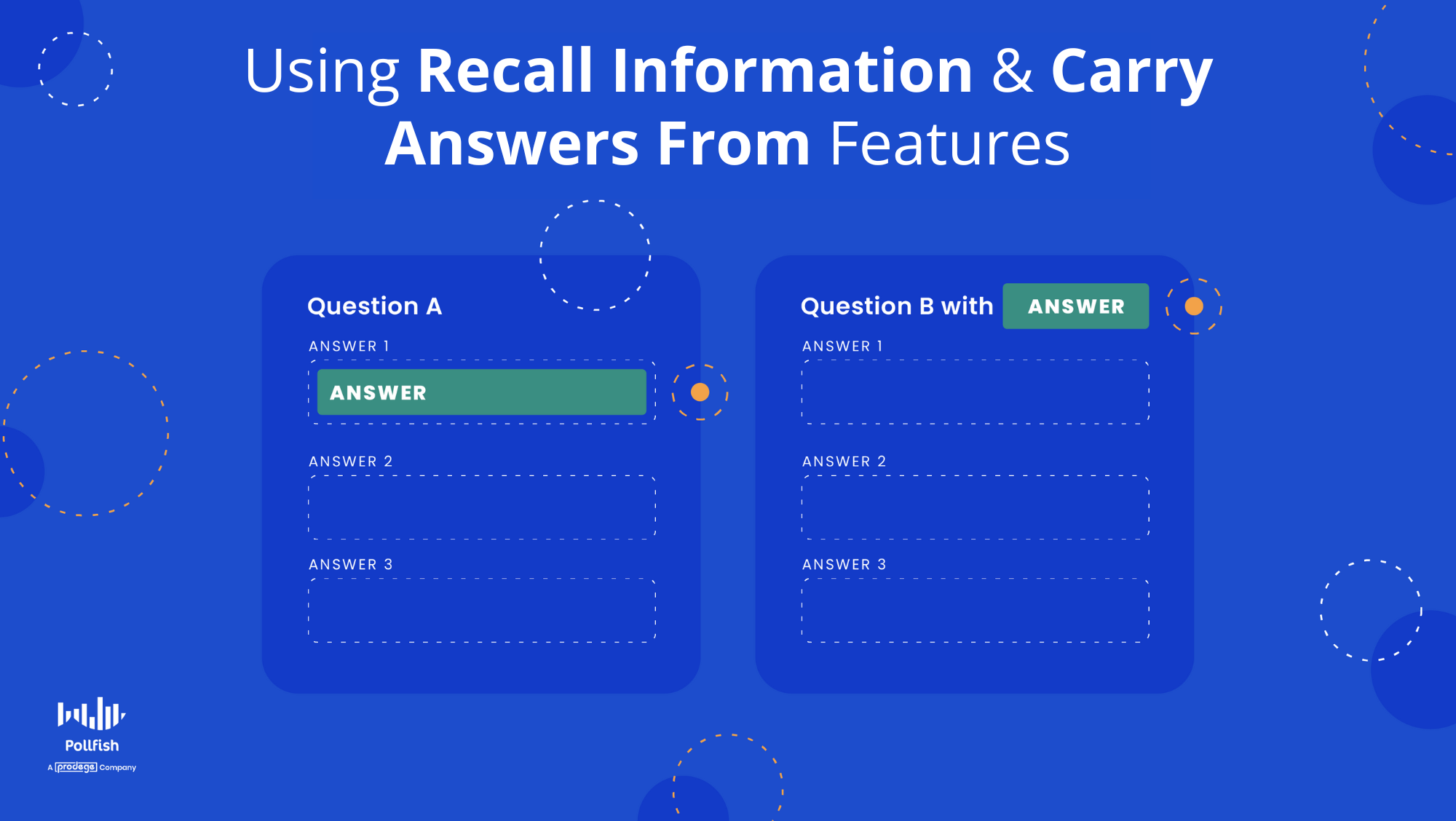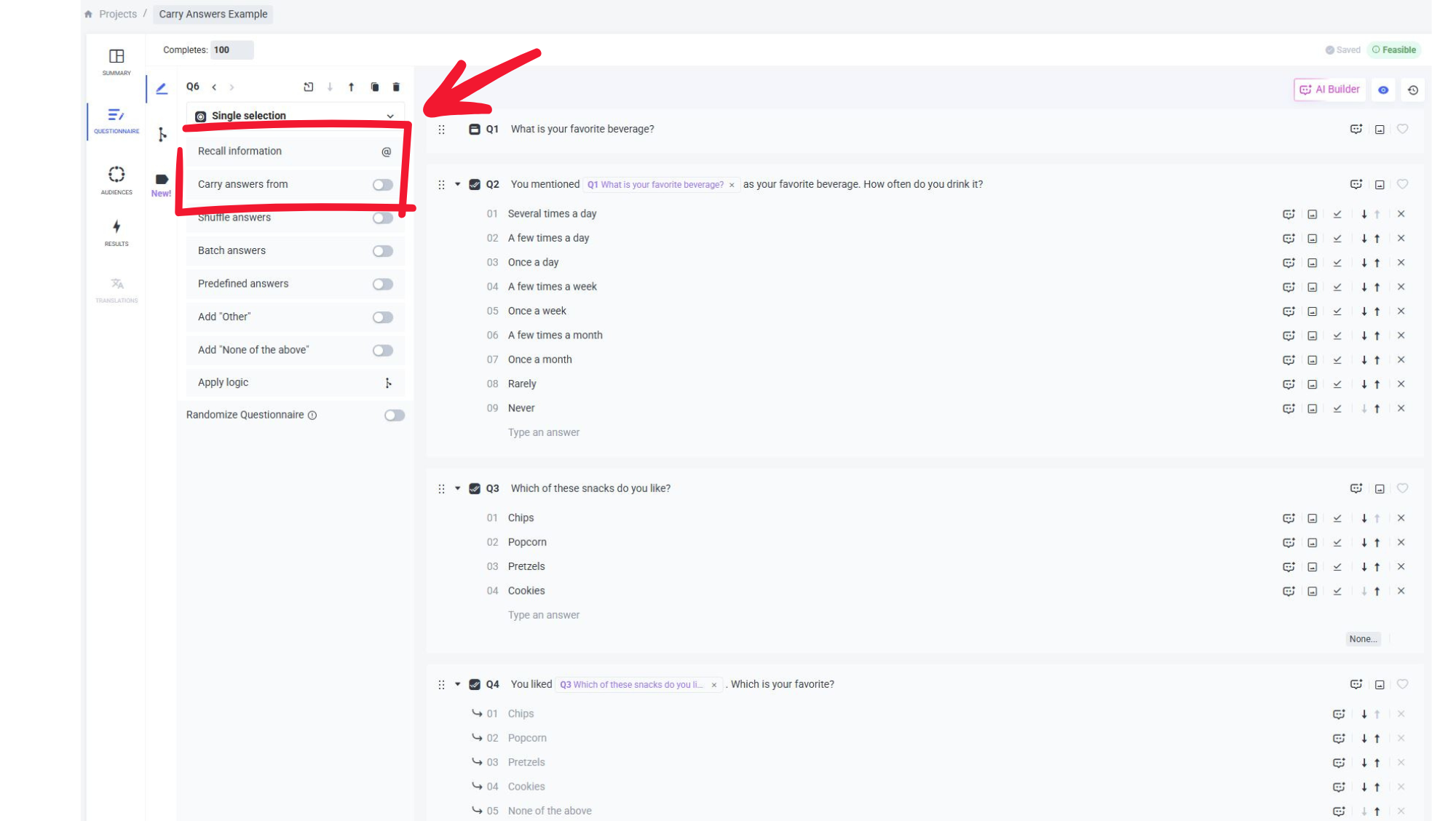How to Create a Survey with Sensitive Questions and Avoid Being Flagged on Pollfish
How to Create a Survey with Sensitive Questions and Avoid Being Flagged on Pollfish

Setting up a survey that deals with sensitive topics is never an easy feat for any party involved. To avoid trouble in your market research endeavors, we’ve updated our Review Policy for sensitive questions/topics. (See the Pollfish Review Policy section in this article)
Although the Pollfish platform offers a vast pool of question types and makes it easy to incorporate any question type, getting respondents to complete surveys with sensitive questions is not guaranteed.
Our review team may flag your survey and even block it from being launched if we deem it inappropriate.
In fact, if you ask sensitive questions in a reckless manner, it is bound to turn respondents away from completing the survey, or beginning one in the first place. Thus, these kinds of questions mar the survey experience for respondents and can lead to survey attrition.
But that does not mean you ought to omit surveys and their larger campaigns due to the inconvenience of the questions being sensitive in nature.
You can still create effective surveys by asking the sensitive yet necessary questions as long as you do so with certain best practices to make it a better experience for your respondents. This article explains how.
What are Sensitive Questions?
The notion of a sensitive question is not as subjective as it may appear. These questions make respondents feel embarrassed or uneasy due to the nature of the question, its tone, context or setup.
Here are some of the question types that can cause respondents to feel uncomfortable:
- Questions that invade privacy:
- Religion, political stance, sexual behaviors
- Questions that ask about illegal behaviors:
- Drug use, theft, perjury, other illegal acts
- Questions that pose a risk or paint the respondent in an unfavorable light:
- Cheating on partners, tests, taxes, thoughts on their colleagues or job
- Questions on identification (especially if detailed):
- Income, age, race, job title
- Questions with socially desirable responses:
- Voting history, exercising, wearing a seatbelt)
- Questions that deal with unpopular ideas:
- Racism, ageism, etc.
While you cannot change the nature of a question, you can still set it up so that it is poised to be better received — and answered.
Other Factors Causing a Distressful Survey Experience
Aside from the questions themselves, there are other factors in your survey relating to the questions that can render an uncomfortable survey experience. As such, you should be aware of these to understand the respondents’ perspective.
Additionally, understanding them will help you avoid running into these pitfalls and optimizing your surveys for effective survey campaigns. The following discusses the major causes of distress and survey attrition in regards to sensitive questions.
- The privacy (or lack thereof): Privacy is of the utmost importance when it comes to filling out any survey. When it comes to surveys that deal with sensitive topics, it is especially important, as no responder will want to associate their identity with their answers.
- Although your survey is private, perception is key, as respondents may perceive that their participation may still be traced back to them
- The mode of the survey: This involves the means of administering the survey; some may send it via email, while others rely on a survey platform.
- This is an issue of presentation, which may influence respondents’ perception of privacy.
- Ex: Emails sent to respondents remove the air of confidentiality, since it was sent to a particular address, which often is the respondents’ names.
- This is an issue of presentation, which may influence respondents’ perception of privacy.
- Brand Reputation: When dealing with sensitive topics, respondents are particularly aware of the organization to which they will provide answers on sensitive topics.
- Some surveys do not mention the brand or organization which they represent, while others may.
- In relation to sensitive questions, respondents may feel unnerved to share answers with certain companies.
How Sensitive Questions Harm Your Survey When Used Incorrectly
As mentioned in the introduction, using sensitive survey questions without heeding critical best practices have grave consequences for your survey campaign. They tarnish the accuracy of the responses, an issue no survey platform can fully evade.
They also lead to respondents unwilling to take your survey, that is, they won’t even open it to give it a chance. This makes fulfilling your survey quotas and number of completes a more difficult and lengthy process.
Survey attrition is another issue spawned when sensitive questions are used improperly. Market researchers can avoid poor quality data and survey attrition by setting up surveys with sensitive questions in a thoughtful manner, one that fully takes best practices into consideration.
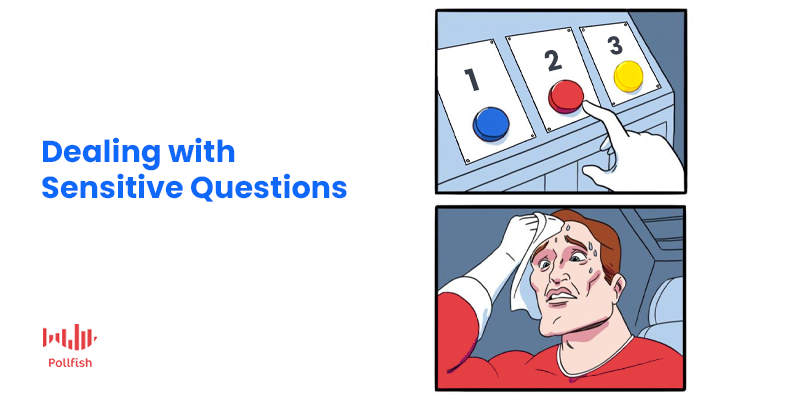
How to Ask Sensitive Questions the Correct Way
Market researchers can still extract responses on sensitive subjects by doing so with best practices.
As such, you need to devise your survey strategically so that you don’t repel much-needed respondents. In order to keep responders in the survey, having them answer honestly and answering all the questions, apply the following methods.
These methods will avoid summoning feelings of distrust and general unease. They will also help you build your survey in a way that is conducive to a good user experience.
- Be upfront about privacy: Relay a confidentiality guarantee.
- Either in the survey callout, invitation or introduction, assure your respondents that their participation is completely confidential.
- Let them know the precautionary methods you’re taking to ensure their answers remain hidden from general view and are not associated with their names.
- Be transparent with the purpose of the survey. Tell the respondents upfront what the topic of study is along with its purpose.
- Doing so will avoid surprises and when respondents know what they’ll be dealing with upfront, they’ll be less disinclined to complete their surveys.
- Be honest with anonymity. Don’t relay that a survey is anonymous unless it actually is.
- On the Pollfish platform, all responses are anonymous based on our terms, so you can state that the survey is anonymous.
- Additionally, the survey must contain one initial screening question that states the study’s content and asks for respondents' age and consent. For example:
- “The following survey contains questions regarding [sensitive content input]. Are you willing to take part in the following survey? 1. Yes, I am 18 years old and above and I give my consent 2. No’'
- Build up to sensitive questions, don’t ask them right away.
- Don’t ever present sensitive questions first; instead, lead up to them by asking more neural questions that become more specific with each incoming question.
- This way, you can avoid shocking your respondents and turning them away from answering or providing honest questions.
- Use ranges instead of specific values.
- Respondents may not feel comfortable with revealing the exact amount, especially if it deals with a negative behavior or societal disapproval.
- For example: instead of providing precise numbers as answers to, “how many times have you fought with your spouse?” or “how many times have you smoked cigarettes last week?” use ranges, such as “under 3 times last week,” “3-5 times,” etc.
- Use “question loading” to elicit honest answers.
- Not to be confused with loaded questions, question loading involves blanketing a question with context, so as to make the subject in question appear more normal and acceptable.
- This will make respondents feel less guilty of partaking in a certain behavior, act or inertia.
- Ex: Instead of asking “did you exercise last week?” question load the question to normalize the less acceptable answer (of not exercising).
- Question-Loaded: “Given that the average American worker works 9 hours a day and has several responsibilities, exercising is not always a priority. With that in mind, how many hours of exercise did you do last week?”
- Use frequency questions instead of yes or no questions, if the topic deals with partaking in a bad behavior.
- Instead of asking “have you ever run a red light when driving?” ask “how many times have you run a red light when driving?”
- The latter assumes the respondent has already done so, so their response cannot be a lie.
- If you used a yes or no question, on the other hand, the respondent would be less inclined to answer honestly, given that negative behaviors are not socially acceptable.
- Instead of asking “have you ever run a red light when driving?” ask “how many times have you run a red light when driving?”
- Provide an “I prefer not to answer” option.
- Try as one might to frame a question tactfully, sometimes respondents simply do not want to answer a sensitive question.
- Instead of losing a respondent due to one such a question, provide a multiple-choice option of opting out.
- This is best suited for surveys that include questions other than sensitive ones. If your survey applies questions on sensitive topics only, you should not include this option — unless it’s on one or two particularly sensitive questions.
- Be upfront about privacy: Relay a confidentiality guarantee.
The Pollfish Review Policy for Sensitive Questions
Starting in December 2022, Pollfish is introducing a more stringent review policy for all surveys dealing with sensitive topics.
We don’t take sensitive topics lightly, especially surveys that cross the line and become inappropriate. This includes surveys that feature the following content:
- Rude language (swearing, insults, crude topics)
- Leading questions (those that contain answers that lead to certain opinions that respondents don’t necessarily hold but have no choice but to select)
- Offensive content or language
- Disturbing content (language, imagery or audio files)
- Insinuations
- Hate speech
This means, if your survey is deemed inappropriate, it will not only be flagged, but will have the possibility of being shut down completely.
Essentially, you won’t be able to run said inappropriate survey.
That’s why we ask you to please be aware of the content of your survey. Pay attention to all of the elements of your survey, such as:
- The overall theme and topic
- The subtopics
- The demographics
- The period of time (proximity to a scandal or controversial event)
- The language and tone
- The narrative the questions (and their answers) form
- The images and other multimedia files you include
- How you address certain sensitive issues (disability, illness, sexuality, race, religion, gender, gender identity, etc., political leanings)
- The positioning of the questions (some will need advanced skip logic so that only the most relevant respondents will be routed to a particular question).
- The quotas you set on the demographics and psychographics of your survey audience
Now, let’s get into more basics of our policy. The original policy is composed of three criteria and they are as follows:
- Respondents must be at least 18 years old to take the survey. You can review your age targeting in the Audience tab.
- The survey must contain one initial Screening Question that states the study’s content, for example: “The following survey contains questions regarding [sensitive content input]. Are you willing to take part in the following survey?”
- Your responses are anonymous.
- There must be one question that explains the survey content briefly, along with the purpose of using such information and how you’ll use it.
The Pollfish team needs time to review your survey before pushing it live. If your survey is deemed inappropriate, it’ll be flagged as such in our survey process of approvals. We’ll ask you to edit it by either rephrasing your questions or removing them altogether.
Remember to be respectful in your surveys as you would be in real life. There is no need to shock or offend, or ask leading questions to push a narrative. Doing so will only tarnish the validity of your survey.
Extracting the Best Respondent Data
Obtaining quality data relies on several things, such as the questions themselves, the setup of the survey, how it’s introduced and the digital platforms it is deployed in. Additionally, it relies on the aid of a quality check function.
Thus, it’s important to invest in an online survey platform that facilitates the entire survey process — from creation, to deployment, to survey quality checks and post-completion quality checks. The Pollfish platform performs such checks with an AI-powered system. It voids incomplete surveys, those with gibberish answers, users of VPNs and more.
Ensuring the use of a competent online survey tool will maximize the success of your survey, allowing you to avoid the survey bias present in surveys with sensitive questions.
The Most Instrumental Pricing Questions for Market Research
The Most Instrumental Pricing Questions for Market Research
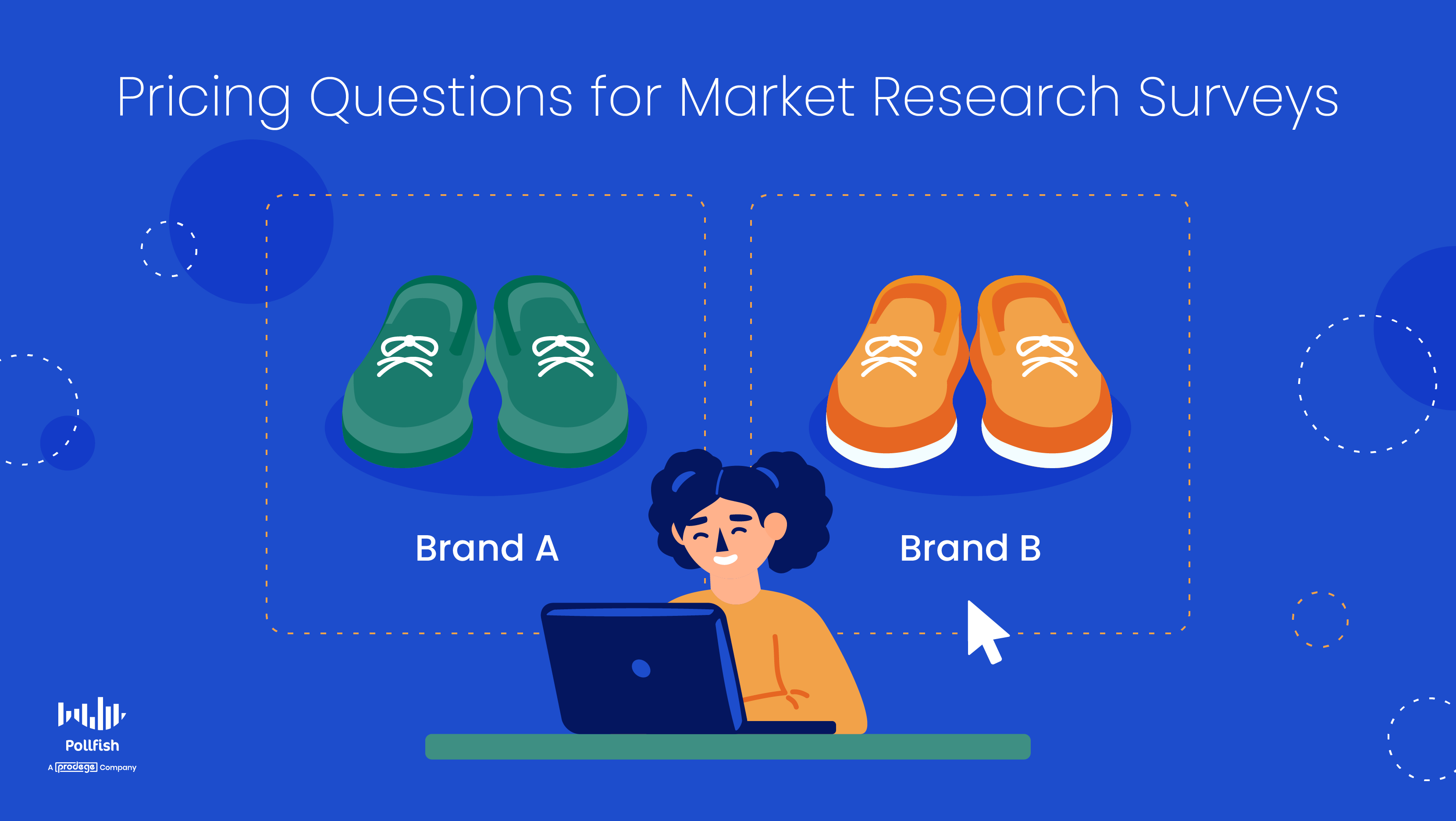
You’ll need to use a handy set of pricing questions for market research, specifically for your pricing research campaigns.
These questions are particularly useful in survey studies, as surveys — especially the online variety — are the most effective tools for conducting market research.
Online surveys grant you quick access to the customer behaviors and perceptions of your target market, the segment of customers most likely to buy from you.
As such, you should apply surveys to pricing studies, as the prices of your products and services are highly important to many customers. In fact, a wide swath of customers makes their purchasing decisions solely based on price.
That’s why you’ll need a solid set of pricing questions that you can use in your pricing survey and various other market research campaigns.
This guide lays out a variety of different types of useful pricing questions for market research to use in your pricing survey, including their key examples and importance.
The Importance of Pricing Questions for Market Research
Using pricing questions for market research is exceptionally important in the age of mass information and price-conscious customers.
Presently, a wide swath of customers makes their purchasing decisions solely based on price.
This is the case across virtually all industries.
A whopping 65% of customers check for price comparisons while they're physically shopping in a store. These comparisons then dictate their buying decisions, given that these price-conscious customers consider the price of a product as a key buying factor.
This is proven, as 57% of consumers consider price to be a top factor in deciding which company to buy from. Clearly, customers are paying attention to the price of your products — and you should too.
You’ll therefore need to have a reliable set of pricing questions in order to run a pricing survey or conduct any sort of pricing research.
It’s always helpful to have a guiding light for your research endeavors, so use this article to find useful pricing questions.
Types of Pricing Questions for Market Research
There are different types of pricing surveys; thus, you’ll find different kinds of pricing questions. Pricing questions can differ in the following ways:
- Differing formats
- Accompanying visualizations
- Question topics
- Question styles (yes or no, more contextual questions, etc.)
In order to conduct a strong pricing research campaign, it’s important to be able to identify the kinds of pricing questions out there, so that you not only understand them better, but can create them on your own and know which to use in different circumstances.
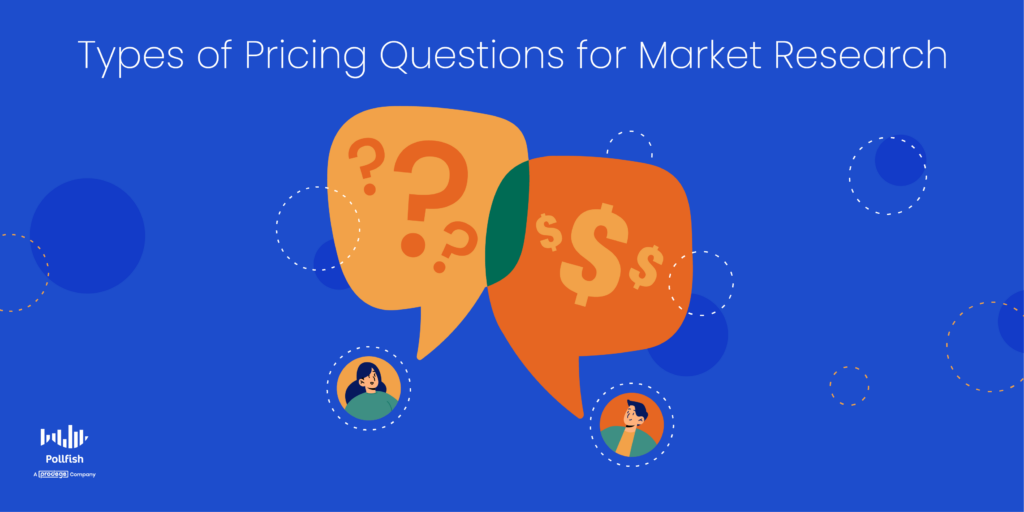
The following lists the four main types of pricing questions you’ll find in different market research campaigns. Some of them may require using a market research tool that supports a particular format and presentation, such as with a conjoint analysis and the Van Westendorp Pricing Meter.
Thus, the types of pricing questions you can create depend on the online survey platform you use. Not all survey platforms offer the same features, so you may not be able to use all of these question types if your online market research platform doesn’t support them.
Here are the four main types of pricing questions for market research:
- Van Westendorp Pricing Meter questions
- Customer Willingness to Pay questions
- Gabor Granger questions
- Conjoint Analysis
Now, let’s explore each question type by understanding it in greater depth and seeing some question examples.
Van Westendorp Pricing Meter Questions
These questions are used with a market research feature called the Van Westendorp Price Sensitivity Meter. This is a pricing model that provides data for decision-making in regard to consumer price preferences.
The meter uses a visualization in the form of a graph, with ratings on price and value. These are presented as responses to survey questions that focus on the prices of different products and services.
As such, it is used to determine customers’ willingness to pay a range of prices. It uses their answers to conclude the prices that your customers deem acceptable, too high, too low and optimal.
As such, this pricing model/feature usually comprises only four questions. They include the following:
- What price would be so low that you start to question this product's quality?
- Determines: Too cheap
- Alternate question: At what price would you consider the product to be so low that you would feel the quality couldn't be that good?
- At what price do you think this product is starting to be a bargain?
- Determines: Cheap/ good value
- Alternate question: At what price would you consider the product to be a bargain, aka a great buy for the money?
- At what price does this product begin to seem expensive?
- Determines: Expensive high side
- Alternate question: At what price would you consider the product starting to get expensive, not so much that it is out of the question, but you would have to give some thought to buying it?
- At what price is this product too expensive?
- Determines: Too Expensive
- Alternate question: At what price would you consider the product to be so expensive that you would not consider buying it
Customer Willingness to Pay Questions
This question category is simpler than the previous; it is also more specific, as it simply asks customers to share the actual price that they would pay for a product or service.
Customer Willingness to Pay Question Examples
This survey question can be asked in two ways:
- As an open-ended question, allowing respondents to write in their maximum pay number of choice.
- It may also present respondents with a range of numbers to choose from via a multiple-choice question.
- This can be either a single selection question, in which responders choose one price or a multiple selection question, where people can select more than one.
Direct and simple, Customer Willingness to Pay questions are therefore easy for researchers to create and for their respondents to answer.
Given that these questions only require participants to state how much they are willing to pay for something, respondents aren’t required to have any background knowledge about a product, nor do they need to have experience using it, or information about its industry.
Although respondents that do possess this background knowledge may have more realistic answers, it isn’t critical.
Although these question types are useful, they lack context. When there is no other information, and you ask about the willingness to pay at one point in time, this question risks getting inaccurate data due to the simple execution of answering.
In addition, respondents may overestimate their own price sensitivity, as they choose their own answers of the prices they themselves desire. These are understandably going to be lower than the actual prices of goods, which they would still buy.
Gabor Granger Questions
These questions use a market research feature called the Gabor Granger Model. This kind of survey feature works by establishing the maximum amount responders are willing to pay for a product or service.
The questions and answers are linked and presented in a flow chart-esque way, where the respondents are shown set price points to determine the highest one they would accept. Then, their responses are used to find the optimal price range for your target customer.
These pricing questions use advanced skip logic to continually move through a set of questions until the highest price point is reached.
Aside from determining the optimum price for your customers, the Gabor Granger model generates a price elasticity curve. This visualization illustrates the effects of raising and lowering the prices demanded, showing you just how the impact of pricing changes has on potential sales.
How it works:
- The initial price is $100; the respondent marks “No.”
- Then, $70 is shown; the respondent marks “Yes.”
- Then, $80 is shown: the respondent marks “No”
- Then, $75 is shown: the respondent marks “No.” -At this point, the question is complete, as $75 is found to be the highest price point.
This model is especially ideal in the following two scenarios:
- You already have a price range, but would like to sharpen it for accuracy
- You seek to learn the price sensitivity of your product in your industry.
Gabor Granger Question Examples
Here are some Gabor Granger question examples:
- If we changed our streaming service to include unlimited movies, how would you evaluate the following price points:
- Pricing Option: $50 per month
- Answers: Yes, No
- If we offer certain upgrades for a new rent increase, how would you evaluate the following rent raise price:
- Pricing Option: $100 more per month
- Answers: Yes, No
- What is the probability that you would buy this product at $400?
- Pricing Option: $400 (initial)
- Answers: Rating scale of 1-7, (1= not likely, 7 = highly likely)
- If we offered this product in a bundle, how would you evaluate the following price points:
- Pricing Option: $45
- Answers: Yes, No
Conjoint Analysis Questions
A conjoint analysis is another specialized market research feature. It allows researchers to measure the value that consumers place on various aspects of a product or service.
As such, it is used when you have other variables aside from price to evaluate, such as when you decide which features to include in a product, or which services to include in an offer to customers.
A conjoint analysis presents respondents with a series of configurations, with different price points, and asks them to choose their desired prices. These arrangements can be randomized as well, allowing you to see the trade-offs customers are willing to make.
Thus, it shows how your customers perceive the makeup of your offerings, in relation to the price.
This method breaks a product or service down by its various components, called attributes and levels. Researchers can test different combinations of the components to identify consumer preferences.
Although this is one of the most complex pricing models, it is also the most accurate. A strong online survey platform, however, will make it easy to run this model, as it can be used as another survey question.
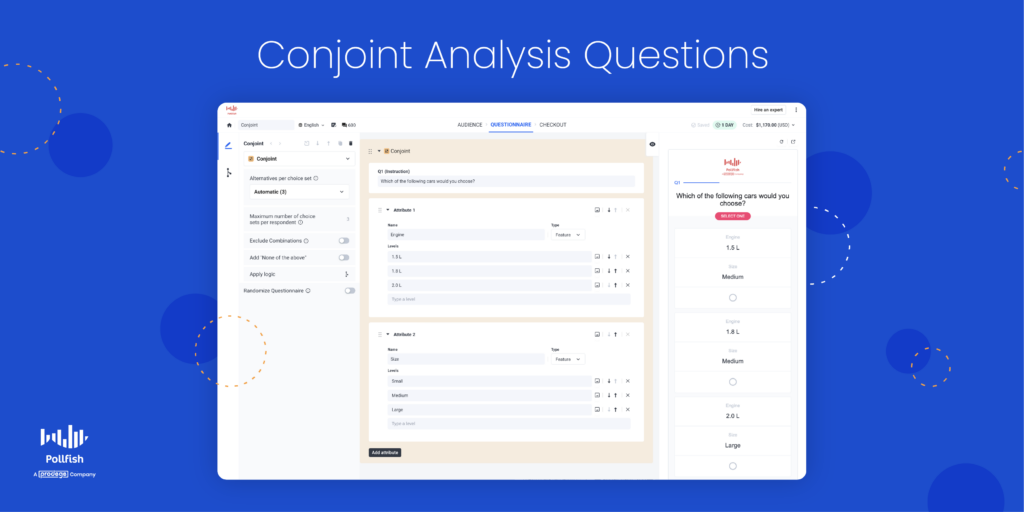
The Two Types of Conjoint Analysis Features on Pollfish
- Choice-Based/Discrete-Choice Conjoint Analysis:
- Users are asked to choose repeatedly from a set of 3-5 full profile concepts. It’s designed to mimic real-world shopping behavior by presenting two complete offerings side by side. The data is then analyzed to identify the preference for different attributes and features based on the trade-offs the user made when making their choices.
- Maxdiff Conjoint Analysis:
- Also called the Best-Worst Scale, a Maxdiff Analysis is a mechanism for prioritizing new product ideas and tailoring them to consumer preferences.
- This is a kind of conjoint analysis that helps brands determine the value that their customers place on different parts and features of a product.
- Respondents choose the best and the worst option from a given set of options, which relate to a product and its feature(s).
- Respondents rate a list of items by selecting only two of them — the complete opposite of each other, labeling one as the best of the list and one as the worst.
- This technique helps to identify what your target market values and what it despises.
- Users are shown a series of packages and asked to choose the best/most preferred and worst/least preferred. It’s designed to cut out the ‘middle ground’ and focus respondents on the best and worst items in a list, requiring less effort on their part.
Conjoint Analysis Question Examples
Choice-Based Conjoint Analysis Questions
- Which of the following smartphones would you buy for $700?
- Pricing Option: A single product
- Answers: DIfferent phone attributes
- If we offered a new kind of sneaker, which of the following options would be most appealing to you? Please make one choice per set. If no options look appealing, choose "None."
- Pricing Option: 3-4 prices
- Answers: Different styles, brands and price points
MaxDiff Conjoint Analysis Questions
- When choosing a price point for a resort, what are the least and most important factors in your decision?
- Pricing Option: Most important, least important fill-in options
- Answers: Pool availability, Gym availability, Suite availability, Price
- Which are the most unlikely and likely prices that would make you buy this product?
- Pricing Option: Various price points
- Answers: Respondents choose 2: 1 very unlikely price and 1 very likely in a set of price options
Setting the Right Prices
Setting the right prices for different products and services can be tricky, but it shouldn’t be an ordeal — not with the proper survey platform, that is.
The key to mastering price research campaigns is to use a strong online survey platform, as not all market research platforms offer the same capabilities, features and customer support.
Use an online market research platform that allows you to easily target your survey audience, create your questionnaire and deploy it to the masses (or to specific people).
Luckily, Pollfish facilitates all three of these critical aspects in the survey creation and distribution process.
We offer two methods of survey distribution: deploying surveys across a large network of random internet users in their natural digital environments via our Random Device Engagement (RDE) method, as well as the option to target specific customers in specific online spaces with the Distribution Link feature.
Additionally, Pollfish survey software allows you to create and analyze a thorough survey data collection, one you can customize, view and organize however you like.
In addition, with our vast array of question types, you can create virtually any type of pricing research survey to support your market research campaign.
You can also leverage a wide range of information on your respondents by accessing a wide pool of insights in your survey results dashboard.
With a market research platform this advanced, you can easily create a pricing survey and conduct data-driven pricing research campaigns to win over all of your customers.
Complete Your Real-Time Market Research with a Survey Platform
Complete Your Real-Time Market Research with a Survey Platform
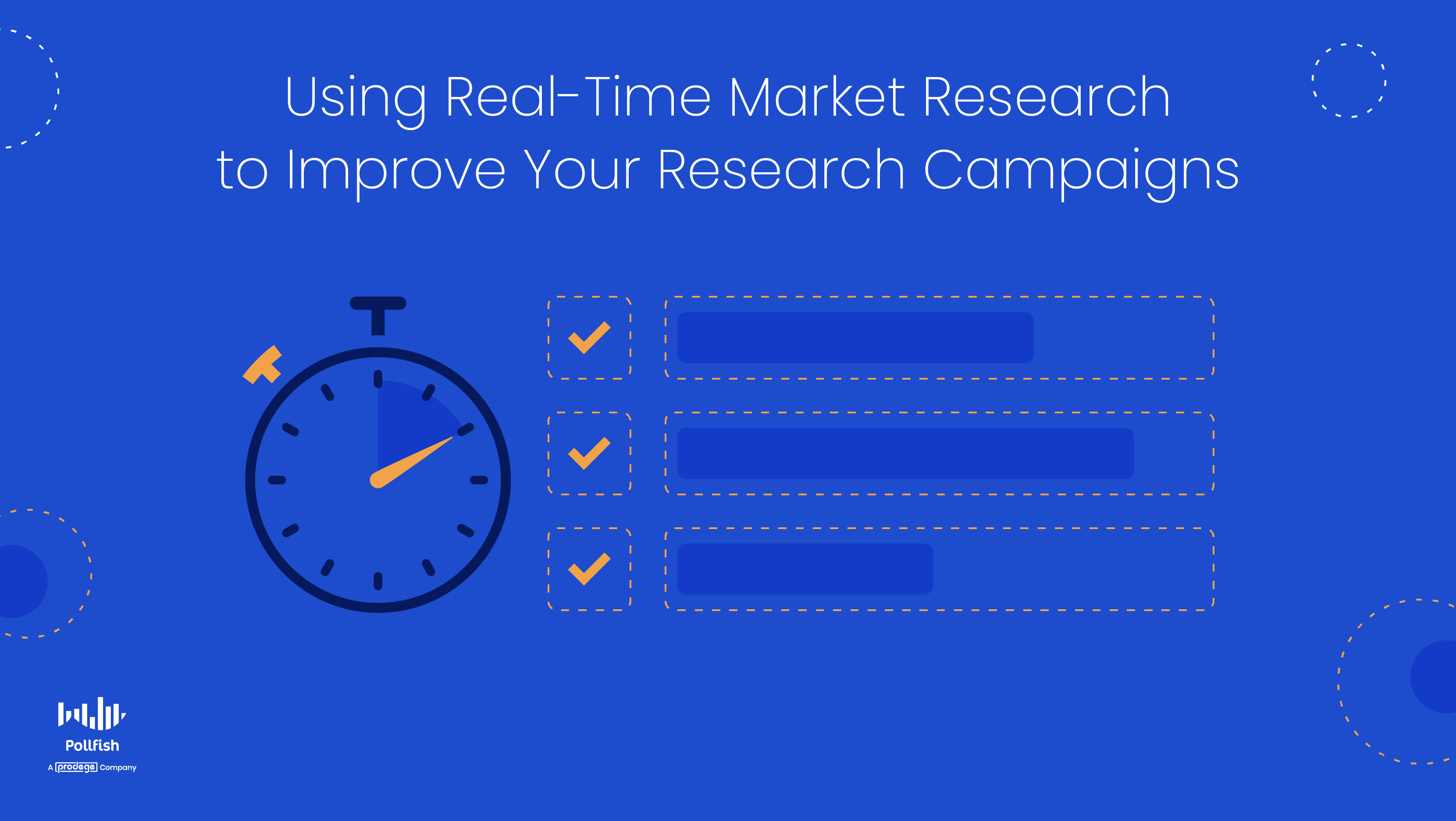
You may have come across real-time market research, a modern version of what essentially is ethnographic research.
That’s because businesses are constantly being swamped with different types of data collection methods — and software companies making all sorts of promises on the capabilities of their data.
This results in a kind of data overload: In 2022, 97.2% of businesses are investing in big data and AI. Despite this seemingly omnipresent investment, only 32% of businesses are able to realize tangible and measurable value from their data.
This rings true in market research as well, which provides a groundswell of data on customers and market trends. Among them is the said real-time market research.
Real-time market research is often part of the data advertised as necessary to businesses so that they can understand their customers. But this is not the same as real-time results data, despite the similarity in name.
Neither is it the same as survey research and other forms of agile market research.
However, it can be used in tandem with agile market research. The key is to do so correctly and to fully understand what real-time research entails.
This article lays out real-time research, how it's conducted, its importance and how it can be used alongside agile market research, specifically survey studies campaigns.
Understanding Real-Time Market Research
As its name suggests, real-time market research is a kind of data collection method that garners information on customers in real time. This is to say that it involves collecting insights on customers’ experiences as they occur.
This may appear to be much like an ethnographic approach, which is a traditional market research method.
Ethnographic research is a kind of qualitative market research method for collecting data. In this method, data is collected through firsthand observations, which are then used to draw conclusions about customers.
Customers are thus observed in their natural environments rather than being interviewed after the fact.
These natural environments that customers frequent include:
- Malls
- Stores
- On the street
- Watching an advertisement
- While speaking or interacting with them
- Customer support sessions
- Digital environments (more on this in the real-time results research section below)
While it may seem to be outdated, it has been modernized in the form of real-time research, with different software companies offering tools for businesses to monitor their customers in the here and now.
Real-Time Market Research Vs Other Forms of Research
As you know, there is a plethora of research methods you can leverage for your studies.
Real-time is a form of research that should not be confused with other kinds, regardless of how similar in name they may sound, or how similar in function they may appear to one another.
There are a variety of legacy market research methods, such as snail mail surveys, telephone calls, in-person interviews and research panels.
However, for the purpose of this article, we’ll discuss how the real-time research approach differs from two major kinds of research: agile and real-time results research.
How Real-Time Differs from Agile Research
Real-time market research differs from agile research in that real-time is a method of collecting information by way of drawing data on a customer’s experience as it is happening.
As such, it is centered on customer experience and is therefore used to gain a clear understanding of customer reflections and their behaviors, as they’re manifesting them.
Agile market research, on the other hand, is a kind of research driven by iterative and incremental software development processes. It is predicated on getting insights on customer behaviors and sentiments, after they have occurred.
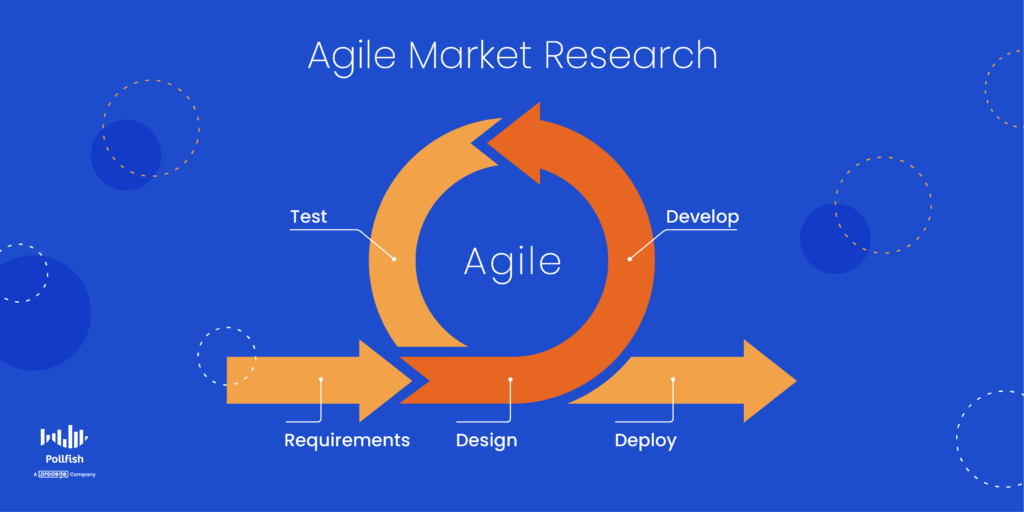
It is also different, in that it is also bent on rapid and flexible responses from respondents — these are often automated via software such as automated surveys. This agile method gives way to many benefits, such as faster time-to-market, low costs and improved quality of outputs.
Like many other kinds of market research, agile market research methods are primarily focused on forming statistics, while real-time research is based on data science.
As opposed to the reality of customer experience, the agile approach deals with the reflections of customers.
The biggest difference between these two forms of research is that in agile research, you would explicitly ask your respondents questions, while you wouldn’t in the real-time research method.
How Real-Time Differs from Real-Time Results Research
While they sound similar, these two forms of market research differ considerably. Interestingly enough though, real-time research can be a form of real-time results research.
First, let’s understand the core of real-time results research.
Real-time results research is a kind of research method in which customer data is collected in real-time.
However, unlike in real-time research, the real-time results method is based on data. Thus, the real-time results approach is focused on observing customers in the digital space, not in physical places.
The data becomes available as different data visualizations, which researchers can see being updated in real-time.
On the contrary, real-time research is driven by observing customer actions in the physical realm. It is therefore a modern version of ethnographic research since it also obtains information from consumers without explicitly asking them questions.
However, it too can apply to observing customer data in real-time. Thus, in this way, it is a form of real-time results research.
As such, it is easy to see why these two methods are often used hand in hand.
How to Conduct Real-Time Market Research
Real-time market research has evolved along with the broader market research industry. Gone are the days when the only way to conduct it was by watching customers in person or interacting with them (however, you can still use these methods as well).
The following is a list of the ways you can conduct this form of research:
- Social media listening
- Session replay tools
- Predictive analytics
- Field marketing
- Speaking and interacting with customers at trade shows, grand openings, etc
- Viewing how social media posts are engaged with
- Viewing how advertisements are engaged with
All in all, you can use any method of collecting data, as long as it gives you a firsthand glimpse into a customer’s experience as it is happening.
The Importance of Real-Time Market Research
This kind of research method is important on several accounts.
First off, it provides an alternative to agile methods of data for decision-making. This is important to researchers who seek to gather information on customer behavior as it exists at the moment rather than studying it retroactively.
This is also important, as it can be used as a comparison method to compare current behaviors and sentiments as they exist, with those of the past. In this way, it can be used for comparing the data from longitudinal studies.
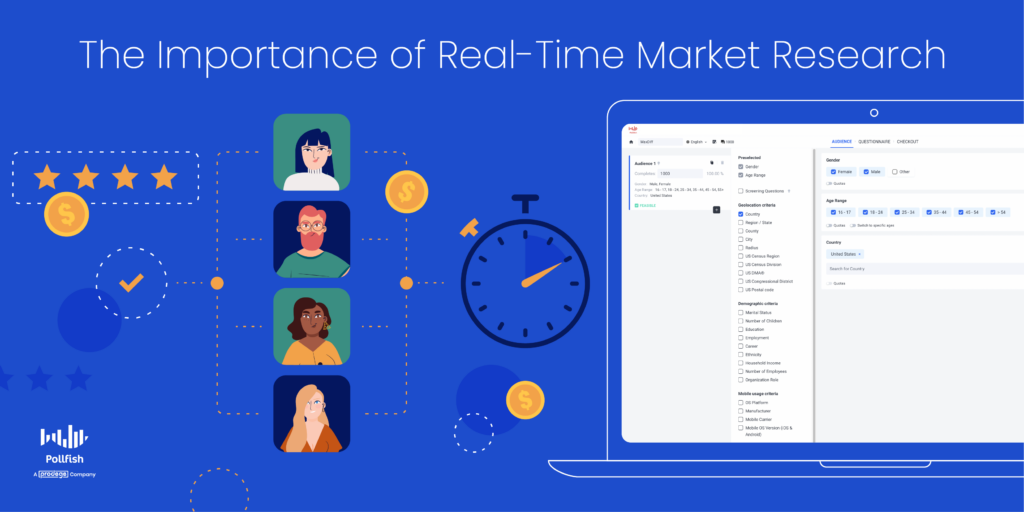
In addition, this kind of research approach is critical to satisfying the need for a sharper understanding of customer reflections and behaviors. That’s because agile data can’t always capture everything, as some respondents forget things while others fall victim to selective memory.
Real-time research is also a must for client-side marketers who are in demand of immediate data, the kind they can access at any time of the day.
What’s more is that you can use it as a kind of real-time results research, by evaluating the performance of customers’ digital activities. They can do so via the tools mentioned in the prior section.
The greatest benefit of this kind of research is that it can be used in conjunction with agile market research, such as the kind you get from software such as survey platforms.
Using Survey Research with Real-Time Market Research
The ultimate verdict on real-time research is that it should never be a lone market research effort. Instead, it should be used in tandem with other forms of research, such as the aforementioned agile research.
Why? It’s simple. The insights you derive via the real-time method are far from sufficient.
They become truly invaluable, however, when you pair them with agile data. With both types of research in tow, you will be able to conduct an exhaustive research campaign.
That’s because these two forms of research complement each other. When you don’t have enough information from one, you can conduct the other type to make up for the gaps in insights.
For example, say you begin with real-time research. While the observations you made were interesting, they are likely to set off a bunch of questions in relation to the activities you watched. Thus, you would follow up with agile research, specifically via a survey campaign.
In this dual approach, you’ll get ethnographic research, coupled with answers to the questions that stemmed from it. Thus, you’ll have a full-picture understanding of the subjects you’re studying.
You can also compare real-time research with historical data or market trends. Much of this data can be conducted via the agile method as well, especially when it comes to longitudinal research.
In addition, you can also combine the agile and real-time methods via brand trackers.
These are ideal for uncovering seasonal and ongoing trends, unlike real-time, which shows you what’s occurring in the present.
Thus, you can compare the data from both for a strong understanding of your customers and how they feel about your business.
The final key takeaway is that real-time market research provides a key aspect of research on your consumers. But it should never be used on its own; it is best to use it to complement agile research, as automated surveys help fill the void in what a real-time campaign lacks.
Perfecting Your Research Needs
The real-time approach to market research can come in handy whenever you seek to study customer activities and behaviors as they are happening. This kind of research adds another facet to your survey studies.
You should always use it with agile research, particularly surveys, as surveys can uncover virtually anything, depending on the questions you use with it.
You should therefore select your platform carefully. A strong market research company will allow you to carry out and fulfill all of your market research activities.
We suggest using a survey platform that offers a wide range of capabilities and functionalities. This will ensure a valuable campaign that is rich in insights, as well as granting you ease of deployment and analysis.
Pollfish survey software allows you to create a thorough survey data collection, one you can customize to your liking, view however you choose and organize it to the max.
In addition, with our vast array of question types, you can create any type of online market research survey to support your research campaigns.
Researchers can leverage a wide pool of information on their respondents by accessing the data in their survey results dashboard.
When you have the support of such a market research platform, you can truly create multifaceted research experiences to inform all of your curiosities about your customers.
Pricing Your Products the Right Way with the Van Westendorp Price Sensitivity Meter
Pricing Your Products the Right Way with the Van Westendorp Price Sensitivity Meter (Updated)
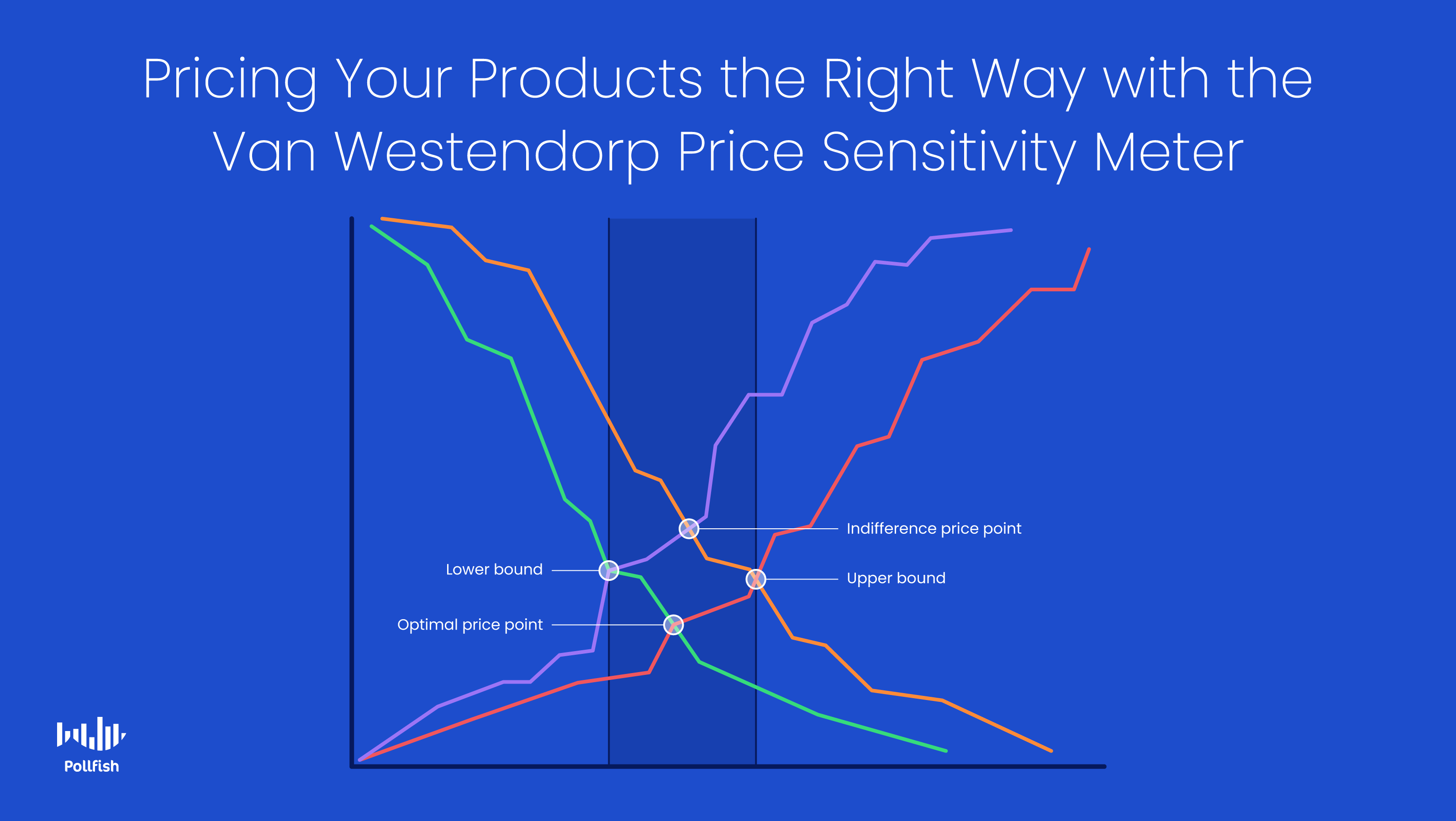 The Van Westendorp Price Sensitivity Meter is an essential market research tool for determining the price of a new product or tweaking that of an existing product.
The Van Westendorp Price Sensitivity Meter is an essential market research tool for determining the price of a new product or tweaking that of an existing product.
It allows businesses of varying sizes and industries to set the proper price of their offerings, one that is in line with customer expectations. After all, pricing is a key aspect of a product’s success.
When it comes to the success of a product or service, everything comes second to price. While this may appear to be an exaggeration, it rings true, especially during the pandemic. Consumers are now more price-conscious than ever before.
In fact, 45% of consumers switched brands to save money in the past year. Consumers are well aware of any signs of inflation, as 77% of consumers have noticed higher prices and over half of consumers are shopping at multiple businesses to find the best price — 53% of customers research multiple stores in search of the best price, specifically.
Fortunately, although it is only February, we’ve got another feature making the rounds on the Pollfish online survey platform. The Van Westendorp Price Sensitivity Meter enables researchers to research customers’ willingness to pay for products and services.
This article explains what the Van Westendorp Price Sensitivity Meter is, its importance, what it is like on Polllfish and more.
Understanding the Van Westendorp Price Sensitivity Meter
Also called the Van Westendorp Price Sensitivity Analysis (PSA) in addition to the Price Sensitivity Meter (PSM), this is a pricing model that provides data for decision-making in regard to consumer price preferences. As such, it is used to determine customers’ willingness to pay a range of prices.
In doing so, it helps conclude the prices that your target market deems acceptable, too high, too low and optimal.
The PSA entered the market research sphere in 1976 by the Dutch economist Peter Van Westendorp. This approach is still in use throughout the market research industry, particularly for product development and to aid pricing strategies.
The meter itself is a visualization in the form of a graph, which presents ratings on price and value from customers. This data is presented by way of responses to survey questions that focus on the prices of different products and services.
This way, researchers and business owners can understand whether their pricing is too high or too low.
The Importance of the Van Westendorp Price Sensitivity Meter
The Price Sensitivity Meter is important on a number of accounts.
First off, it clearly lays out a wide range of price points in relation to how customers feel about them. As the introduction proves with several statistics and editorial sources, pricing is one of the most of not the most important factors when it comes to product success.
Consumers are more conscious than ever due to inflation and other economic downturns brought about by the Covid-19 pandemic. What makes sense to business owners or product marketers does not always align with the expectations and customer buying behavior of customers.
Therefore, businesses should always stay in the know of their customers and this applies to their thoughts, hopes and aversions to different price ranges and points. The PSM is an easy way to access this necessary consumer sentiment.
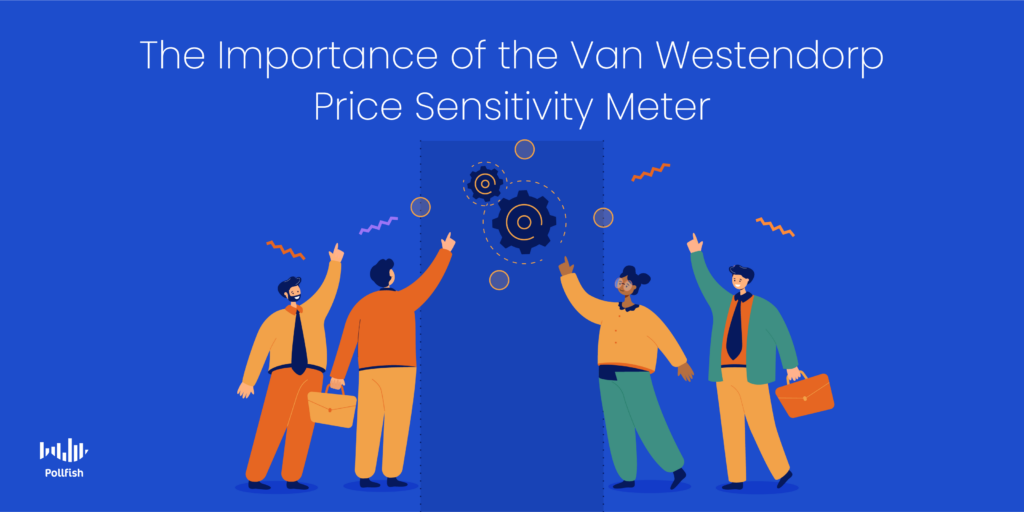
When it comes to going to market, it is crucial to have a deep understanding of how customers value a product and they view its accompanying price. If you don’t, you will certainly disappoint many current and prospective customers, as there will be less of a demand for your product.
In this way, satisfying your customers with good pricing helps you both maintain and increase your customer retention rate along with helping you avoid raising your customer acquisition cost.
While conducting secondary research is a good starting point, it does not provide you with concrete information on your own customers and products, no matter how similar other products in your niche are to yours. Thus, the PSM is a useful tool, as it provides you firsthand information on your own customers and their thoughts about specific prices and products.
The PSA technique is also important, as it is often used during the new product phase, such as in the customer development process to assist you in setting the right price. In this case, the van Westendorp PSM uncovers a potent entry price strategy.
When it comes to established brands and existing products, the PSM will guide your pricing strategy for repositioning a product, or advertising it with new features. In any case, the PSM is a useful tool in gauging price sentiment from your customers and setting the right prices for all your offerings.
How the Van Westendorp Price Sensitivity Meter Works
The PSA begins with researchers’ using an input, which is respondent data based on questions revolving around products and their accompanying price.
The researcher will first present respondents with a product or service, which can be just about anything. They will attempt to get the respondents to become familiar with the product or service and then ask them four questions on it. These serve as the basis of the Price Sensitivity Meter, which the research will then input into the PSM chart.
This method involves using a description of the product or service at hand, which can exist as a video, image or audio file, or text. After respondents view this information, they are then asked the four Van Westendorp questions.
Following this, the results of the questions are entered on the Van Westendorp chart. Let’s learn how they appear on the Pollfish platform.
The Van Westendorp Price Sensitivity Meter in Pollfish
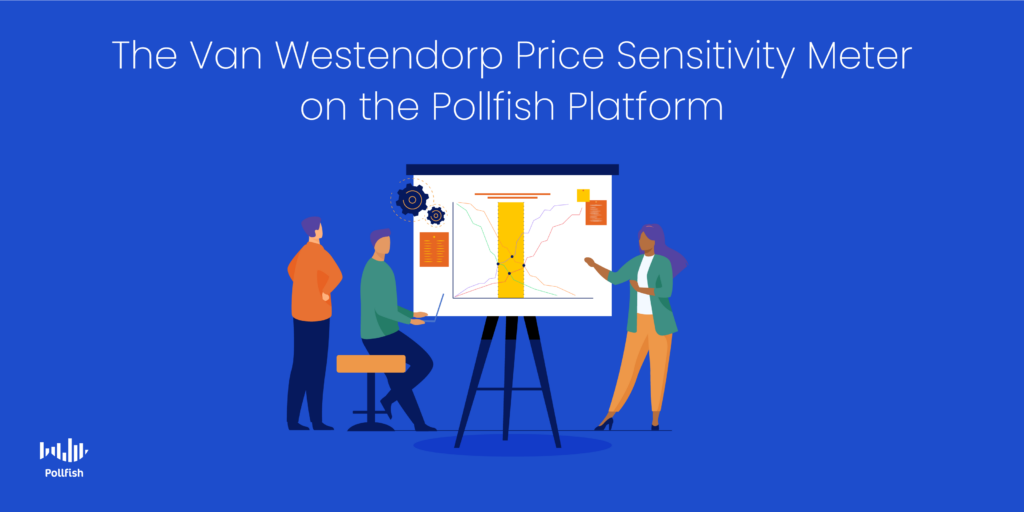
The Pollfish online platform presents the results of the PSA method in the aforementioned chart. The chart is a representation of the cumulative percentage of respondents/price.
The Price Sensitivity Meter appears as the following on the platform:
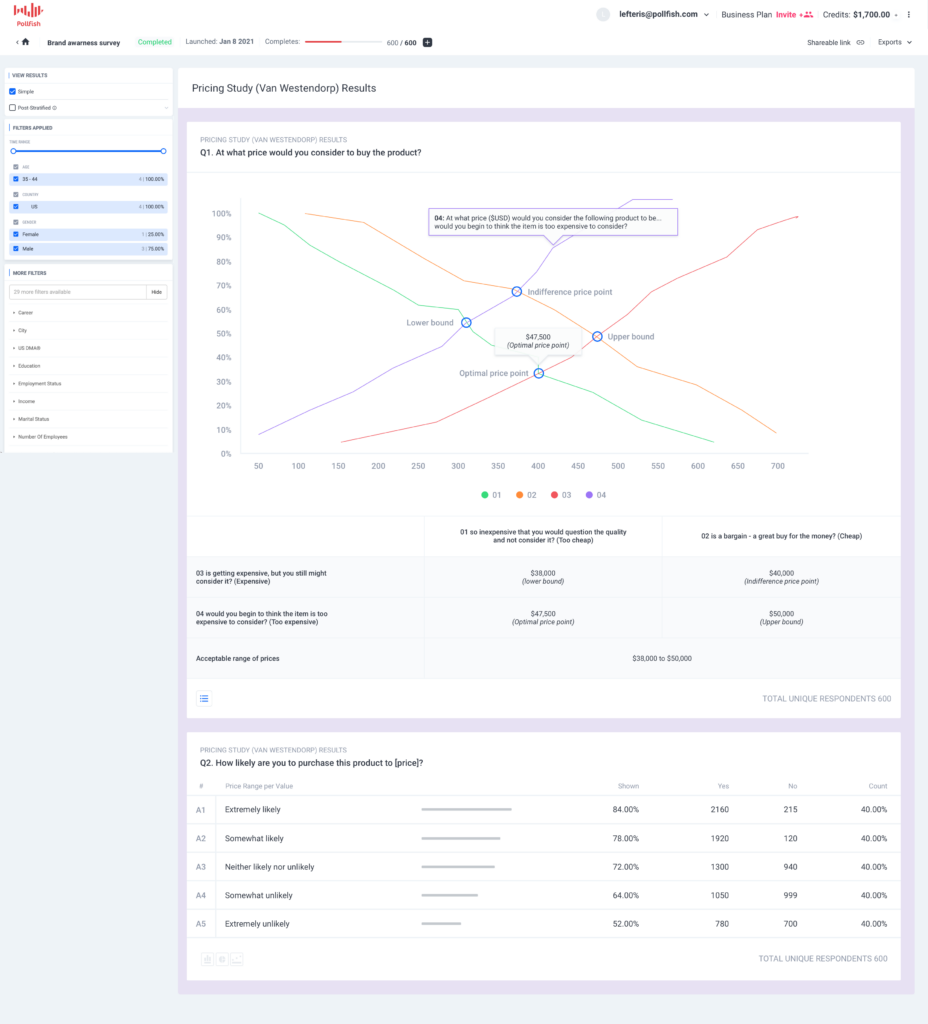
This chart is the outcome of the PSA approach, showing researchers the price range from the lower bound to the upper bound for the product/service. It also allows them to unearth the “optimal price” point and the “indifferent price point.”
This marks the end of the standard or basic PSM. However, the Pollfish platform offers an enhancement to this market research technique. This is called the Newton-Miller-Smith Extention.
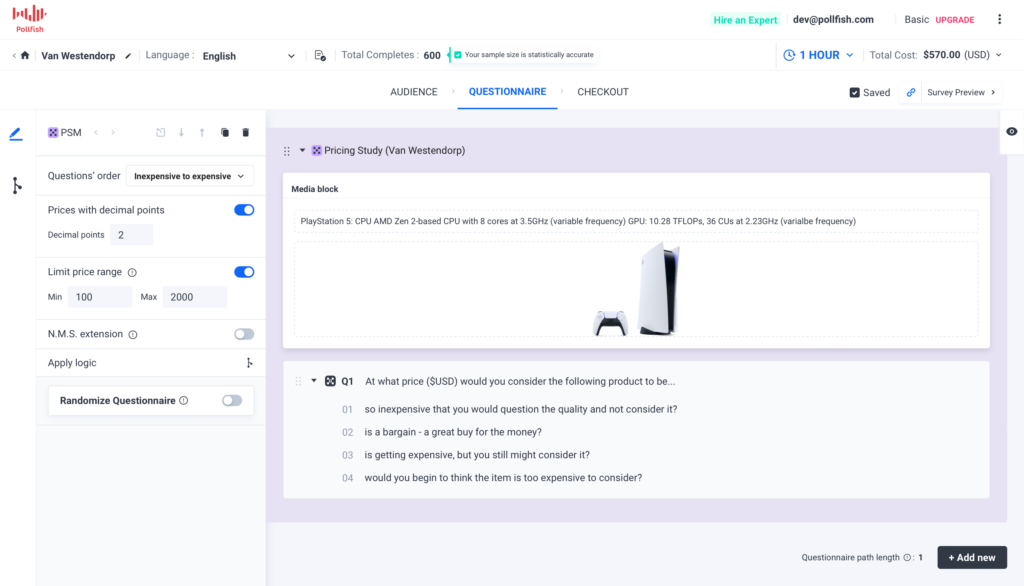
The NMS extension grants researchers the ability to add additional questions (2 or more) about the likelihood of customers purchasing the products and services they were shown/ asked about.
These questions will appear after the four Van Westendorp ones. They exist as rating scales. For example: “On a scale of 1-7, how likely are you to buy this product?”
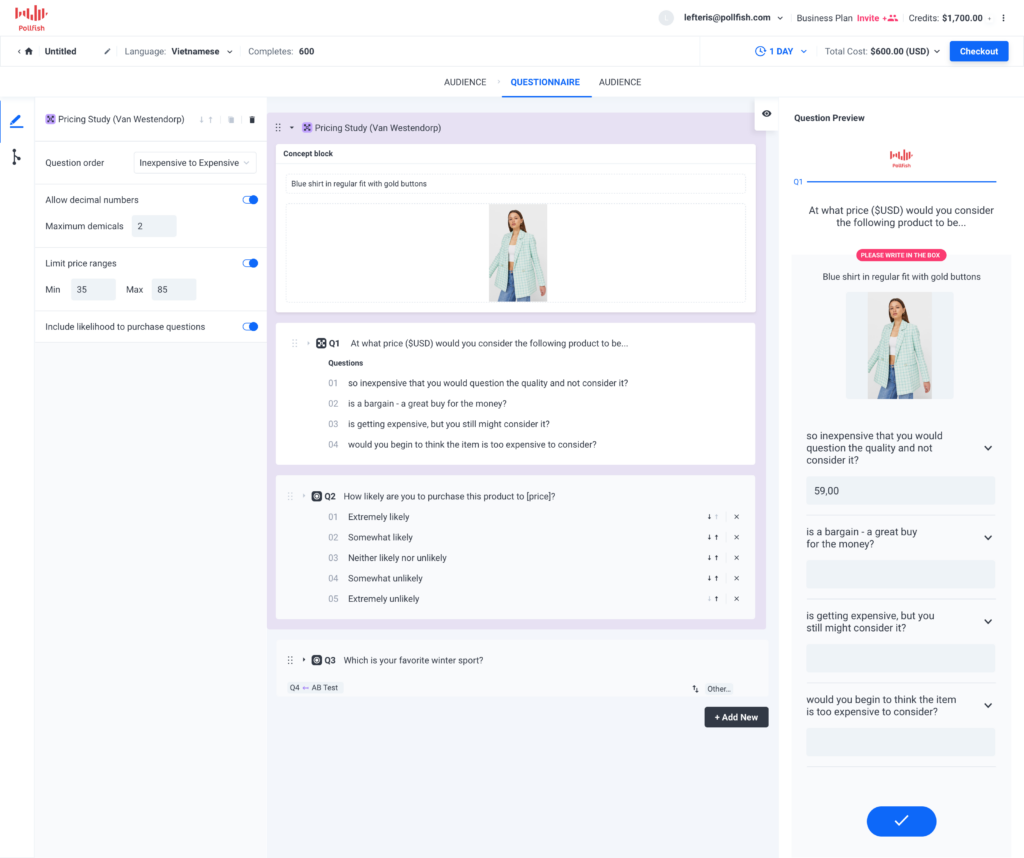
Ultimately, this extension allows researchers to not only understand customers’ sentiments towards price points, but to ascertain whether they will buy the products or not.
The Van Westendorp Price Sensitivity Meter Survey Questions
These questions remain the same in the PSA model. The following displays these survey questions: questions, which exist as numeric, open-ended survey questions.
- At what price would you consider the product to be priced so low that you would feel the quality couldn’t be very good?
- Discovers whether a price is too cheap
- At what price would you consider the product to be a bargain—a great buy for the money?
- Discovers whether a price is either on the cheaper end or a good value
- At what price would you consider the product starting to get expensive, so that it is not out of the question, but you would have to give some thought to buying it?
- Determines whether a price is expensive or on the upper pricing echelon.
- At what price would you consider the product to be so expensive that you would not consider buying it?
- Determines whether a price is too expensive or on the upper pricing echelon.
Using Advanced Skip Logic (2022 Update)
The Van Westendorp Pricing Meter now supports the usage of the Pollfish advanced skip logic feature. This valuable addition to the Price Sensitivity Meter enables you to route respondents to relevant follow-up questions based on their previous answers. Thus, you can create a deep dive into customers by asking them questions based on their specific answers from a prior question.
You can use advanced skip logic when a respondent exits the Van Westendorp PSM. This new capability strengthens and empowers the PSM to be more relevant and personalized to respondents' survey experience.
Forming Optimal Pricing Strategies
Forming an optimal price strategy is difficult; this is compounded when you consider shifting expectations with new seasons. After all, you ought to stand out from your competitors by offering better prices, but also ensure that you’re not selling yourself short.
The Van Westendorp Price Sensitivity Meter allows you to do just that, saving you the guesswork and hesitation in setting prices across all your products and services. What’s best is that it is included in the Pollfish online survey platform.
Remember, you should use a market research platform that deploys surveys within a mass network of publishers, ones that account for major websites, apps and mobile sites, along with one that also grants you the ability to send surveys your own way.
A strong market research platform will also attract your survey audience with an appealing digital element that leads to your survey and easily grabs users’ attention. In addition, it will partner with publishers who gamify surveys, allowing respondents to gain incentives while playing a game, making the experience far from boring.
You should also opt for an online research platform that makes buying survey respondents a quick and simple process. This way, you’ll collect all your necessary data from the right respondents in a short space of time.
Additionally, use a platform that features artificial intelligence and machine learning to remove low-quality data and offer a broad range of survey and question types.
Applying an online survey platform with all of these capabilities will empower you to reach any survey audience and gain all of their thoughts on all price ranges, allowing you to form smarter and more effective pricing strategies.
Accomplishing all Your Research Goals with Self-Service Market Research
Accomplishing All Your Research Goals with Self-Service Market Research

Self-service market research has been gaining ground in the research industry, putting traditional market research methods on the verge of becoming obsolete.
The self-service technology market is undergoing exponential growth, across various subsectors. The self-service technology market is projected to reach $72.51 billion by 2030, with a compound annual growth rate of 11.27%.
Naturally, it traversed to the market research industry as well, as self-service technology is dominating this industry. There are 39,815 market research companies in the United States as of 2022, a 0.5% increase from 2021.
As self-serve market research businesses are rising in growth and popularity, researchers across industries and businesses are abandoning traditional market research methods wholesale.
But what exactly does this form of research entail and what is it capable of?
This article explores self-service market research, its importance and all that you can achieve with it.
Understanding Self-Service Market Research
This is a modern form of market research, in which researchers conduct all research activities themselves, whether or not they are professionals.
Self-Service Vs Syndicated Market Research
In this kind of research, it is the researchers themselves who have ultimate control over their entire research campaign, not their market research platform provider. In this way, it is the opposite of syndicated research, which involves using a research firm that conducts the entirety of your research campaigns.
Aside from conducting the research campaigns, the research firm has full ownership over the direction of the research and all the resulting data, which they can then sell to those who are interested.
Thus, in syndicated research, not only do researchers have no say over the direction of the market research campaign, but the data they purchase is not proprietary to them.
Self-Service Market Research in Full Depth
Because of this, self-service is not just a technological method of conducting research; it is a means of dealing with and owning all of the research you conduct.
This is made possible through certain market research companies — the kinds that provide market research software, specifically polling software. Polling software allows researchers across businesses to create and distribute surveys.
A strong platform is optimized to carry out the entire survey process. This includes facilitating the following aspects:
- Audience targeting
- Questionnaire building
- A survey distribution service
- Different options for survey deployment
- A dashboard for analyzing your survey data collection
These are the main aspects of a self-service research platform, but there are many others that an ideal platform would provide (more on this in the following sections).
Essentially, a self-service platform allows you to conduct DIY market research, a method that permits you to take the do-it-yourself approach to market research campaigns. This means you have all the say on the ins and outs of the research study.
As such, a DIY survey is a tool that grants researchers ultimate control over their survey.
A DIY survey platform offers various capabilities that facilitate the survey creation and distribution processes. With this survey approach, the end-user (the researcher) is at the helm of the study.
That means you get to dictate its overall theme, objectives, target market, design, quotas and everything else in the survey study.
However, not all self-service market research platforms offer the same functionalities. Therefore, some will have more limitations than others, others will have completely different survey sampling methods and these platforms will also offer different levels of audience reach.
The Importance of Self-Service Market Research
This form of research carries a plethora of value in today’s digital age.
First off, this kind of research allows you to gain relatively inexpensive and timely results, the kinds you wouldn’t get elsewhere and through other methods.
You can use the self-service approach to market research to quickly get your questions answered and your problems solved. At the very least, you’ll get insights from your intended audience, the kind that you can use to take critical actions in your business.
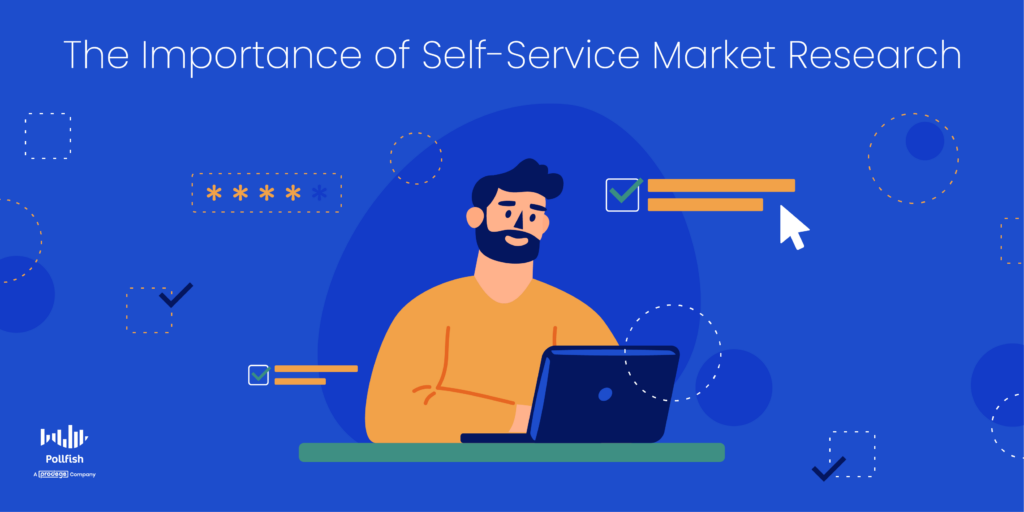
Secondly, being able to access data on consumer preferences and needs is more important than ever, as the customers of the present expect fast response times. One of the quickest ways to address your customers’ concerns and needs is via survey research.
Given that a self-service platform gives you timely survey results, you’ll have the speedy insights you need to take action quickly or answer questions that suit customers. Thus, you’ll be able to delight customers at speed.
You wouldn’t want to upset your customers, as not only will they abandon your business, but are likely to share their discontent about your business with others.
In addition, self-service research is critical, given the higher demand for insights. 40% of businesses aim to increase data-driven marketing budgets. When it comes to being data-driven, market research is a must, as it provides invaluable data about your customers.
Moreover, self-service platforms are the most ideal in market research, as they grant you full autonomy over your survey campaign. You there get to target respondents as you see fit, come up with your own set of questions and pause/edit the survey when it’s running.
This wouldn’t be possible in syndicated forms of market research.
Thus, the self-serve model is critical, as it allows businesses to gain the crucial insights they need, all under one platform, which they can use to their advantage.
The key is to find the proper self-service market research platform that you can trust to conduct all your research with all the capabilities you seek. That’s where finding the right platform comes into play.
What You Can Do with Self-Service Market Research
Part of the large appeal of self-service market research is its many capabilities. These enable you to conduct any research campaign on virtually any survey target audience in the world. In addition, the functionalities of this kind of research are far-spanning.
These allow you to conduct various market research activities, not just survey campaigns. These activities will, again, depend on the market research platform you use.
You can use these activities to aid larger campaigns, such as advertising projects, testing of marketing messaging, product pricing campaigns, etc.
The following enumerates some of the capabilities you can count on with a self-service research platform:
- Thorough audience targeting:

- Target respondents beyond age and gender, with extensive qualifications you can filter.
- A screening section that you use to qualify respondents based on their answers to specific questions.
- Survey deployment:
- Various survey deployment methods:
- Random Device Engagement (RDE): A method that randomly distributes surveys across the internet, prompting random online users to partake.
- Pollfish operates via a digital polling mechanism that uses advertising networks and other digital portals on different devices, (mobile phones), to engage random netizens where they are, voluntarily.
- With RDE, there is no need to be wary of the survey bias that arises from professional survey takers and panelists.
- Specific Online Channels and Respondents: A method in which you send surveys your way.
- You can send surveys to the specific digital spaces you choose, such as your website, partner sites and social media with the Distribution Link feature.
- You can also send surveys to specific people via email through this link.
- Questionnaire setup:
- Choose from a wide range of survey question types, from single selection multiple choice questions to Matrix questions, Drill down questions and many more.
- Use survey templates in different business campaigns, such as logo testing, brand awareness, brand perceptions and more.
- Using the Advanced skip logic feature, which routes respondents to specific follow-up questions based on how they answered a prior question.
- Thus, you can use it to create question paths for relevant questions to direct respondents in a more customized way.
- Mobile-first surveys:
- Mobile-first surveys ensure that surveys conducted on mobile devices are optimized for smaller screens and other mobile limitations so respondents can comfortably use them.
- Many companies claim to be mobile-first, but most survey software is not ideal for mobile usage, as some question formats are not designed for the mobile experience (such as Matrix tables, for example).
- AI and machine learning:
- This provides automated surveys and all of their technical features.
- This includes deploying quality checks on survey data, so no post-survey manual labor is required.
- Quality checks remove survey fraud, such as gibberish answers, bots, VPN users, those who aren’t paying attention and other low-quality data indicators.
- This way, your resultant data is of the highest quality.
- A global support network:
- Some self-service survey software providers have global tech support employees working 24 hours so that researchers are never left without a helping hand.
- This means you can conduct surveys at any time of the day (or night) and reach out to the support team if you need assistance.
- Conducive to global market research:
- On Pollfish specifically, your surveys will reach 160 countries and are available to conduct in 46 languages.
- We also offer a survey translation feature, which allows you to translate surveys in all the languages supported by Google Translate.
- Various Market Research Functionalities:
- A strong platform will offer various market research functionalities, those that go beyond simple survey creation.
- This includes the following features:
- Monadic A/B testing and sequential A/B testing.

- A/B tests are used to compare product concepts, communication ideas, or ads using equally structured groups of participants.
- With Monadic A/B testing, respondents claim their preferences for one concept that they get randomly. This is one of the many that the researcher wants to test and compare, instead of being exposed to two or more concepts at once.
- In sequential A/B testing, researchers can test multiple concepts at once, as opposed to just one with the monadic version. All possible combinations are used from the selected concepts shown to the participants.
- Maxdiff Analysis:
- Also called the Best-Worst Scale; this feature allows researchers to prioritize new product ideas and tailor them to consumer preferences, needs and desires.
- Respondents choose what they consider the best and the worst option from a given set of options that relate to a product and its features.
- This mechanism allows you to identify what your target market values and what it detests.
- The Van Westendorp Pricing Model:
- This is a pricing model providing data on product pricing based on consumer price preferences.
- It is used to unearth customers’ willingness to pay a scope of prices.
- It helps determine the prices that your target market holds to be acceptable, too high, too low and optimal.
- Conjoint Analysis:
- This allows researchers to assess the value that customers place on different parts of a product or service.
- It also reveals the distinct advantages and imperfections of your product features.
- Post-Survey Collection Analysis:
- This is available through a dashboard, which hosts all your survey data per campaign and survey.
- It includes a variety of data visualizations such as tables, graphs and charts.
- You can import the data via PDFs, Excel, CSV and Crosstabs.
- You can also view data granularly, by filtering the resulting data, which allows you to view how each demographic answered questions.
- Integrations:
- This will enrich any market research campaign, as it involves using other platforms in conjunction with your main self-service provider.
- SaaS integrations are especially important, as they maximize the capabilities of your software, so you can create an exhaustive research campaign.
Making the Most of Your Research Projects
Self-service market research is possible with many companies on offer in the research sphere. However, they are not all the same; they have different capabilities and different reaches.
As such, you ought to select your platform carefully.
We suggest using a survey platform that offers all of the capabilities and functionalities discussed in this article. This will ensure a valuable campaign that is rich in insights, as well as ease of deployment and analysis.
A strong market research company will allow you to easily carry out and fulfill all of your market research activities.
Pollfish survey software allows you to create a thorough survey data collection, one you can customize to your liking, view however you choose and organize to the max.
In addition, with our vast array of question types, you can create virtually any type of online market research survey to support your research campaigns.
Researchers can leverage a wide range of information on their respondents by accessing a wide pool of data in their survey results dashboard.
With our advanced self-serve market research platform, you can form and excel at any market research campaign, no matter how difficult it may first appear.
What is Product-Market Fit and How You Can Earn it Via Market Research
What is Product-Market Fit and How You Can Earn it Via Market Research
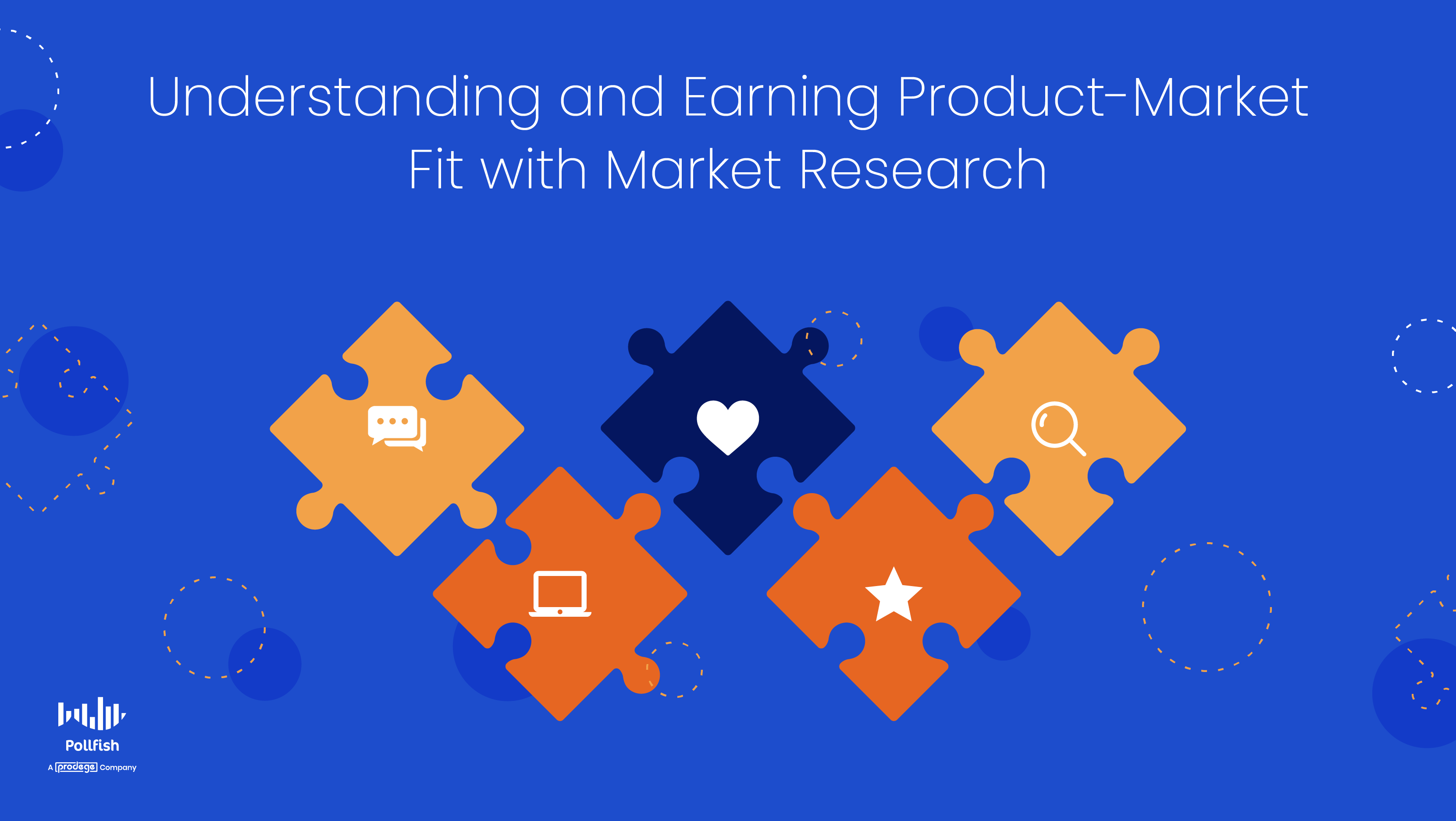
In an ever-competitive startup world, you need to be able to identify your product-market fit. This concept dictates how well a particular market will respond to your product or service, thus predicting its success.
After all, it would be costly and useless for businesses to launch a product that doesn’t align with current market dynamics and demands.
Marc Andreessen, co-founder and general partner of Andreessen Horowitz, who popularized product-market fit, described the term as “being in a good market with a product that can satisfy that market.”
Moreover, this concept is important to measure and achieve, as a lack of a product-market fit is one of the top reasons why businesses fail. In fact, 35% of new businesses fail due to the lack of product-market fit. On the contrary, a strong fit leads to a high-performing product among its target market.
However, a hefty 80% of SaaS companies never make product-market fit. As such, reaching and measuring this concept for your business can be challenging, but market research helps you both gauge and earn it.
This article examines the concept of product-market fit, its importance, how to measure it and how to obtain and increase it for your business.
What is Product-Market Fit?
Product-market fit, also known as product/market fit, denotes the extent to which a product satisfies a strong market demand. It is typically used to describe startup companies, as long-established businesses have some degree of it — otherwise, they wouldn’t be in business.
In laymen’s terms, product/market fit means being in a good market with a product that can satisfy that market.
This concept describes the stage of a startup company in which it has successfully identified a target market — it therefore also involves the process of first finding a market that will become consumers of your product. This way, the company can serve its members with the right product or service.
When brands achieve a strong product-market fit, they can then work towards scaling; they do so by attracting more customers, usually through market research techniques.
There may be multiple market segments in your product-market fit. It’s important to ascertain at least one when establishing a business or creating a new product.
If you don’t ensure that the product you’re developing aligns with the needs of customer personas, scaling will be difficult.
This concept is also used to depict a scenario in which a company’s target market members are not solely desiring the company’s product or service, but are buying, using, and telling others about the company’s offerings. This phenomenon involves the customers doing this in large numbers, the kind that sustains a product’s growth and profitability.
As such, product-market fit is designed, intended for and is often manifested as something that critically affects customer behavior, mainly in a way that benefits a company.
The occurrence (and maintenance) of a product-market fit exists as a conjunction of three critical aspects:
- Customers recognize your product’s value.
- They tell others about their great customer experience with your product.
- Your business continues to provide an excellent customer experience for new customers.
Although this concept is usually associated with marketing and product management, achieving it is a shared responsibility across the company. This means that sales, business development, support, finance and all other departments can help a company reach this important milestone.
The Importance of Product-Market Fit
Product-market fit is important on several counts.
First off, before you create a product that you confirm enough consumers are willing to use and pay for, your business cannot afford to plan or work on any other strategic objectives. This is because it is impossible to focus on growth if you do not have a customer base or a product deemed viable by your would-be target market.
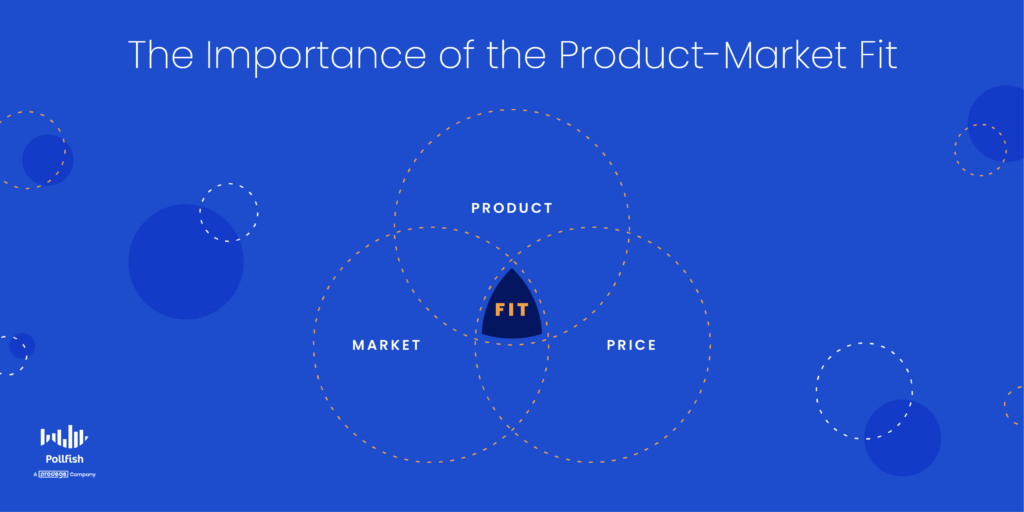
After all, how can a business cross or upsell if they haven’t sold anything to begin with? Or, even if you had sold some products early on, if you failed to sustain a product-market fit, your chances of sustaining both a customer retention rate and customer acquisition are slim.
As such, any initiatives you take before establishing a product-market fit are counterproductive, as you don’t have enough demand to generate a profit. As such, if you continue working on something with a low product-market fit, or one you haven’t measured, you’re essentially risking investing in something with no commercial value.
In addition, you won’t be able to raise enough seed money, let alone further funding rounds without a sound product-market fit.
Venture capitalists and other debt lenders take a risk on the companies they fund; they will not invest in a company with a low product-market fit. This is because they expect a return on the investment they input into a business. Evidently, there will be no such return if your products don’t yield high enough demand.
When fledgling businesses struggle to raise venture capital, they end up in a startup graveyard, unable to launch their business, all due to the market for a product not being big enough, also known as a low product-market fit. Even the “good” entrepreneurs can wind up on this graveyard when they unintentionally chose to create products for small, crowded, or shrinking markets.
A product-market fit is especially important for B2B SaaS startups, as there is much they contend with, such as educating their markets on the benefits of their products — which takes time and money. They also face the pressure of accelerating their sales from venture capitalists.
It is therefore par for the course that startups need 2-3 times longer to validate their product-market fit than their founders expect.
How to Measure Product-Market Fit
You can determine your product-market fit in a number of ways. Determining your product-market fit involves the process of adjusting the product in your market based on consumer feedback, and using that feedback to evaluate its profitability.
This process verifies that you have established a group of potential customers that react positively to your service or product. This ensures that it is auspicious enough for you to sell it.
As such, product-market fit is less concerned with crunching numbers and more focused on understanding who your customers are in-depth and how they feel about you and your offerings.
Measuring product-market fit therefore involves gauging the following:
- The need for your product or service
- The level of satisfaction of your customers (and those of competitors)
- The level of engagement with your products and services
- How often your customers use your product and services
- How many new users (or customers) you get through word of mouth
- The purchase frequency of your products or those in your niche
In all of these cases, market research can provide accurate answers from your target market or your market under study.
To measure your product-market fit, use the 40% rule, made popular by Sean Ellis. This is a conventional metric for making sense of product-market fit survey results.
This rule dictates that a business holds an adequate amount of product-market fit if at least 40% of customers surveyed say they would be “very disappointed” if they no longer had access to a product or service — or if 40% consider the product/service a “must-have,” meaning, they wouldn’t use an alternative.
You can also apply this rule to the above aspects of measuring product-market fit (in the numbered list). To measure these aspects, you’ll need to conduct primary market research, also through conducting surveys. You can begin by analyzing secondary market research, but the most relevant and up-to-date information you’ll be able to extract on your product-market fit is by surveying potential (and current ) customers yourself.
Do not run this test on just any suspected member of your target market. According to Sean Ellis, the participants of this product-market test must have the following qualifications:
- Consumers who have experienced the core product or the service.
- Consumers who have experienced the product or the service at least twice.
- Consumers who have experienced the product or the service in the past two weeks.
How to Obtain a Product-Market Fit with Market Research
As the previous section explained, the core aspects of a product-market fit can be measured via using surveys and analyzing the responses via the 40% rule. You can also aid your market research with secondary sources.
However, to gain demand and increase your product-market fit, you must constantly listen to the needs, desires, problems and aversions of your target market.
This way, you’ll understand the kinds of products that solve their issues and adapt to their needs, thereby reeling in a high product-market fit.
With this information in tow, you can then confidently and successfully launch your product(s) and even base your business around them.
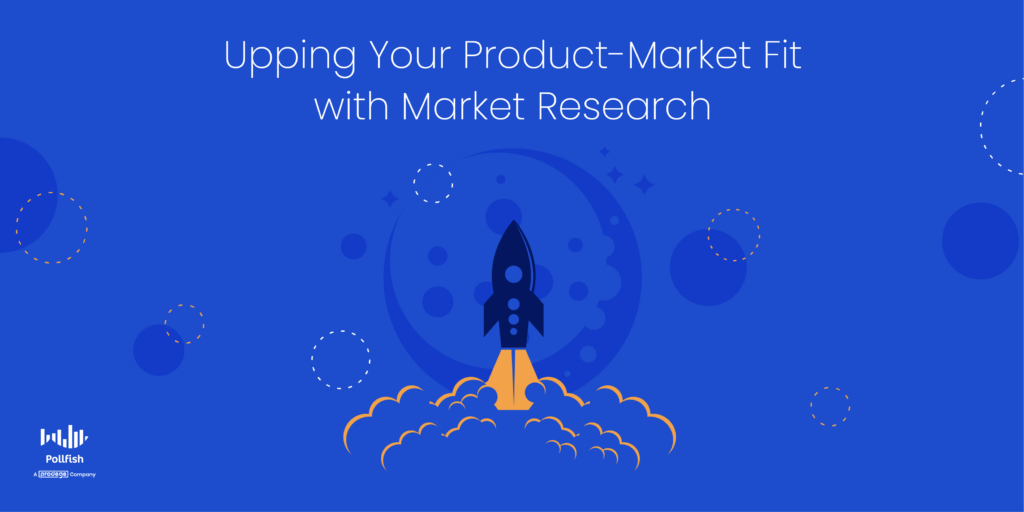
Surveys allow you to question your target market on virtually anything, along with segmenting it via market segmentation and developing customer personas.
As such, using surveys is a solid market research strategy, giving you speedy insights you can use to make informed decisions. Surveys allow you to not merely gain in-depth data on your consumers, but also allow you to monitor your customers over time — this enables you to measure whether your product-market fit can withstand the test of time.
You can also use survey results to justify your product-market fit to venture capitalists and other lenders. These results provide the definitive proof they would need on the viability of your product.
By regularly conducting survey research on your target market, you’ll be able to better innovate on your products so that they continue driving demand, therefore increasing your product-market fit.
By understanding your target market at a deep level with market research, you’ll also be able to serve it better, therefore pulling demand from your customer experience aside from the product alone.
Targeting Your Most Valuable Consumers
In order for startups and long-standing businesses to survive, they need to have a high product-market fit, which dictates how well a product is in demand in a certain market. Luckily for business owners and market researchers, you can measure and even grow your product-market fit with an online survey platform.
To do so, you’ll need a strong online survey platform to carry out your market research and present it in a way that’s most convenient for you.
You should use an online survey platform that makes it easy to create and deploy consumer surveys. It should offer random device engagement (RDE) sampling to reach customers in their natural digital environments, as opposed to pre-recruiting them.
You should also use a mobile-first platform since mobile dominates the digital space and no one wants to take surveys in a mobile environment that’s not adept for mobile devices.
Your online survey platform should also offer artificial intelligence and machine learning to disqualify low-quality data and offer a broad range of survey and question types.
Additionally, it should also allow you to survey anyone. As such, you’ll need a platform with a reach to millions of consumers, along with one that offers the Distribution Link feature. This feature will allow you to send your survey to specific customers, instead of only deploying them across a vast network.
With an online survey platform that offers all of these capabilities, you’ll be able to quickly extract consumer data and evaluate your product-market fit.
Grouping, Shuffling and Randomization in the Pollfish Questionnaire (2022 Update)
Grouping, Shuffling and Randomization in the Pollfish Questionnaire (2022 Update)
As many researchers learn early on, it can be hard to limit bias in surveys which has negative consequences on the quality of data.
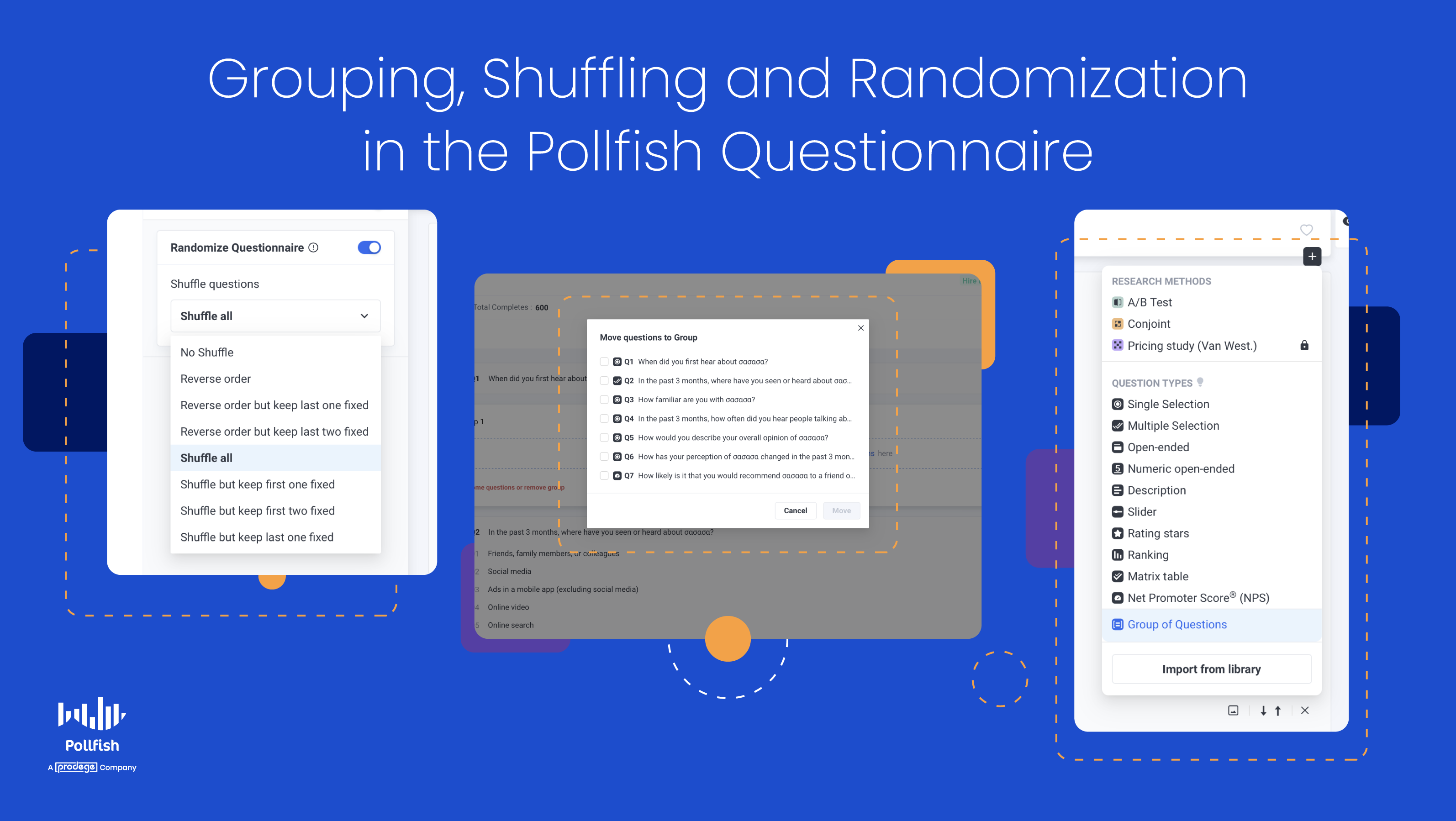
Some best practices for minimizing bias include randomization of questions and the distribution of the questionnaires themselves to reach a diverse audience. Shuffling unordered answers or reversing the order of a scale has also been shown to reduce bias by displaying clear, but differentiated answer options to respondents.
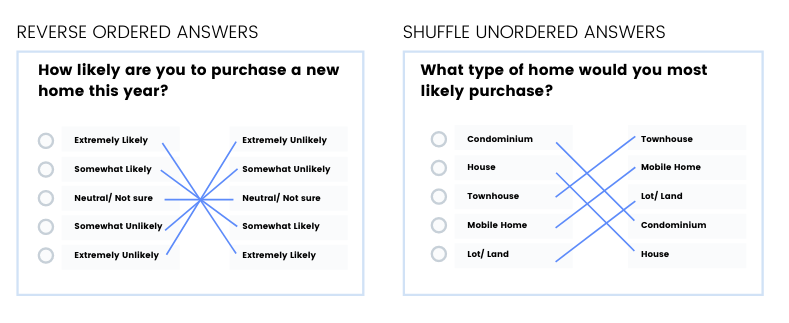
Although Pollfish has supported shuffling and grouping within individual questions, we have recently released the ability to fully randomize your questionnaire. You can shuffle groups of questions and even shuffle the questions within the group for even more randomized survey opportunities.
Here’s how to apply it in your next survey.
Grouping Questions in Pollfish
When you visit the questionnaire section of your Pollfish dashboard, you'll see we offer new randomization capabilities. Here, you’ll be able to assign questions into groups on the questionnaire.
This can be helpful for managing your survey in specific sections, for example, if you wanted to first investigate behavior before diving into specific interests.
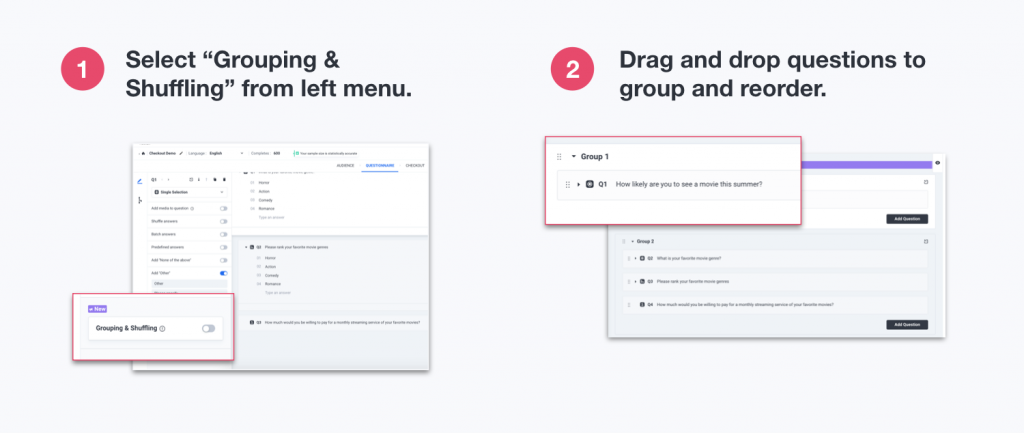
There is no need for a group to contain any certain number of questions. A “group” can contain a single question if needed, however if Grouping is applied to the questionnaire, every question will need to be assigned to a group.
You can manually re-order the groups or the questions within the groups by dragging and dropping, adding or deleting questions as you would in a regular Pollfish survey.
Keep in mind that when you delete a group, you may also delete the questions within the group by selecting “Delete All.” If you’d like to remove the grouping feature but keep your questions, make choose the option that says “Delete Group Only.”
Shuffling and Randomizing Questions in Groups
The groups themselves and the questions within the group can be shuffled randomly or reversed in order to reduce bias without disrupting the logical flow of the questionnaire.
However, there is no ''Grouping and Shuffling'' as an aggregate option anymore. Instead the option has been divided into ''Randomize Questionnaire'' (located on the left side) and Group of Questions (located at the bottom of the Question type drop-down menu).
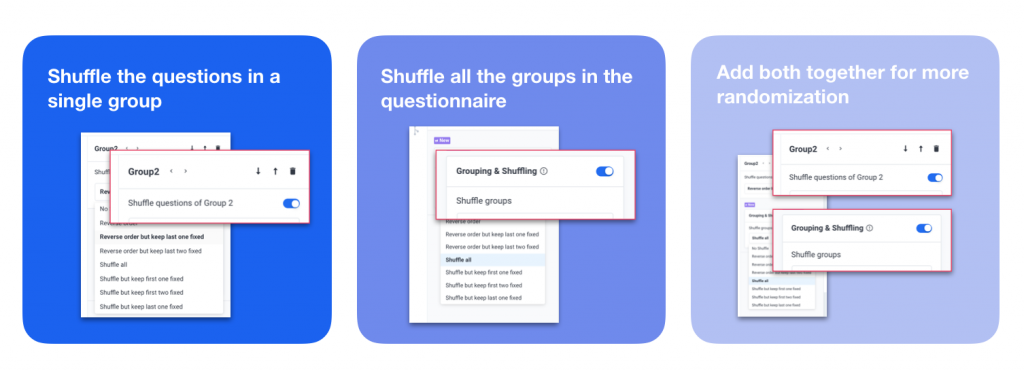
A group can also be “fixed” while other groups are shuffled. For example, perhaps you want to provide a description before a group of questions that will provide context. In this case, you can choose to put a description question-type in a group and shuffle the remaining groups in your questionnaire.
Don’t forget that you can (and should) include shuffling and reverse order options on your individual questions as well, adding to even more randomization and cleaner data.
Originally, we had 3 main ways to shuffle:
- Shuffle the answers in an individual question
- Shuffle groups of questions in your questionnaire
- Shuffle the questions within a group
But now, there are more options for randomizing questions.
You can enable Randomize Questionnaire and select Shuffle All, to shuffle a group of questions with the rest of the questions. If you select the group, you have an additional option; you can randomize the questions within the group. When you turn off the Randomize Questionnaire toggle and shuffle the sub-questions, the platform only shuffles the questions within a particular group, the rest of the questions won't be shuffled.
Essentially, you can shuffle anything you choose while leaving certain questions fixed.
Here's how else you can shuffle on Pollfish:
- Shuffle but keep first one fixed
- Shuffle but keep first two fixed
- Shuffle but keep last one fixed
- And many other ways!
Pollfish Question Randomization Capabilities
Now, it's time to see exactly what our question randomization options look like on the Pollfish platform. To get a visual representation of the functions mentioned in the previous section, look no further.
The following images show how we're offering randomization capabilities on our platform:
Randomize Questions
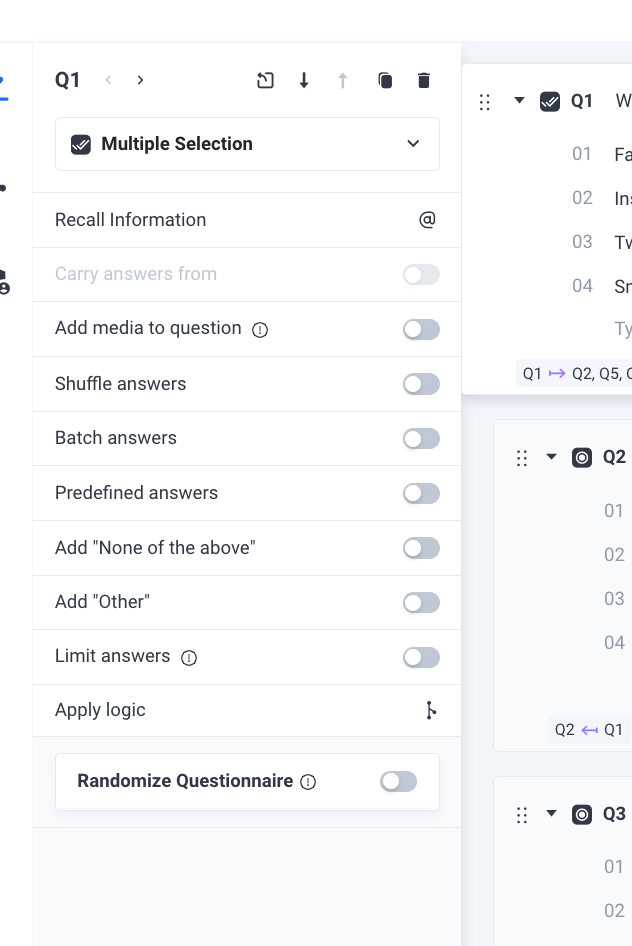
Randomize Question Options
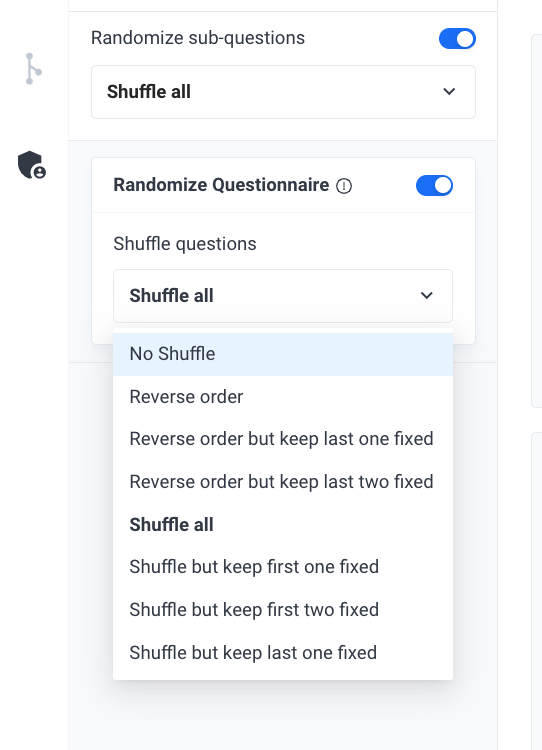
Randomize Sub-Questions
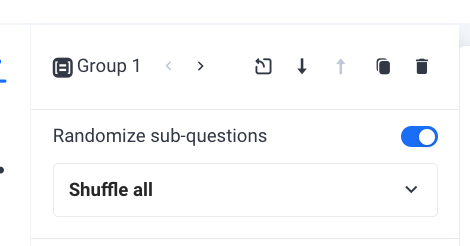
Groups of Questions
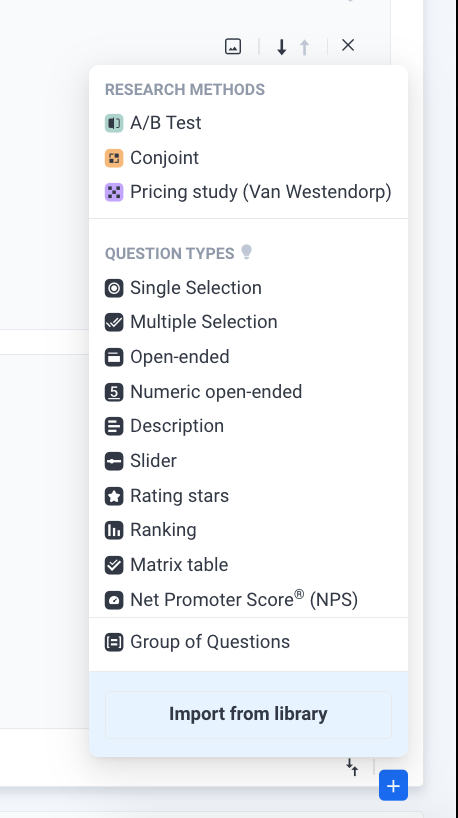
Adding logic to groups: The Van Wesendorp Pricing Meter and A/B testing (2022 update)
Although grouped questions didn't originally include skip logic, the product team has been hard at work to include this feature. Thus, advanced skip logic will support grouped and shuffled questions, as well as allow for A/B testing, a critical and useful feature in advertising effectiveness surveys and more.
You can now use advanced skip logic when a respondent exits a group or an A/B test. You can also use it with the Van Westendorp Price Sensitivity Meter. This is a pricing model that provides data in regard to consumer price preferences. It is used to determine customers’ willingness to pay a range of prices.
This meter takes the form of a graph, which visualizes ratings on price and value from respondents. This data is presented as responses to survey questions that focus on the prices of different products and services.
Thus, when a user exits a group via the A/B testing or Van Westendorp features, you can route them to a specific question.
Closed-Ended Vs Open-Ended Questions: Everything You Need to Know (2022 Update)
Closed-Ended Vs Open-Ended Questions: Everything You Need to Know (2022 Update)
In a survey, information is collected from respondents using closed-ended or open-ended question types, which can present themselves in a variety of different ways. Oftentimes questionnaires include a healthy mix of both.
What are closed-ended and open-ended survey questions?
Closed-ended questions are those that offer a limited selection of answers to choose from, such as a single or multiple-selection question, matrix, or scaling question type.
Open-ended questions are questions that allow a freely-written response to be added. This can be anything from a single word to a short answer. Sometimes they exist within a closed-ended question as a way to provide supplemental text to an answer that doesn’t fit the given options.
Typically, closed-ended questions are used to answer “what” questions whereas open-ended survey questions are used to answer “why” questions.
What to Look for In All Kinds of Market Research Companies
What to Look for In All Kinds of Market Research Companies

Understanding the different kinds of market research companies out there is a must for any serious researcher.
This includes businesses as well, as market research provides critical information about your target market and the landscape of your industry.
It reveals how your company is perceived by your current and potential customers, how you can improve your offerings, how you stand up to competition and much more. Thus, it is clear why the market research industry has been rising, having recently surpassed $76.4 billion in revenue.
Given that market research companies are the foremost providers of this information, understanding the different kinds available and what they offer is essential.
That way, you can compare which is most suitable for your business needs, as all are different, therefore they all present different capabilities, functionalities and features.
Most importantly, you should know what it is you need to be on the lookout for in these companies.
This article provides a rundown on what you should look for when seeking out market research companies.
The Importance of Market Research Companies
These companies are invaluable to the market research industry — and for good reason.
According to Forbes, businesses can't afford to skip market research. That’s because it gains you critical insights into your target market, along with the market trends in your industry. You can’t miss these insights; doing so will harm your business.
That’s because there’s plenty of competition, even if your brand has plenty of brand awareness. As such, if you’re not paying enough attention to your customers, that doesn’t mean your competitors aren’t.
By skipping market research, you are not solely giving up key information on your customers, but are also losing your customers to your competitors, as they’re reaping crucial information about your shared target market. Thus, they’ll be able to foster better marketing campaigns and build stronger relationships with your customers.
To succeed in business, you need to understand your customer base from the outset and throughout. That’s because acquiring new customers isn’t sustainable for business success and there are many stats that back this up.
For example, acquiring a new customer can cost five times more than retaining an existing one. In addition, increasing the customer retention rate by just 5% increases profits anywhere from 25-95%. Moreover, the success rate of selling to an existing customer is 60-70%, while the success rate of selling to a new customer is 5-20%.
In order to retain customers, you need to understand them to a T, especially when it comes to their views on your business and niche. You’ll need to know what they like about your business, what they feel is lacking, their problems (especially if your business can resolve them) and much more.
Market research companies allow you to understand all of these customer concerns simply by using their services. A strong market research company will therefore allow you to easily conduct both a demographic analysis and psychographic analysis of your target market.
These companies allow you to reduce risks in all areas of your business, as you can conduct research into virtually every subject — with the right research company, that is. As such, a strong research company will enable you to embark on any research project, whether it is for market segmentation, product development and anything else.
In these ways, market research companies act as the conduit between businesses and customers.
Although these companies don’t sell to your customers, they allow you to understand all their wants, needs, behaviors and a heap of other concerns, so that you can properly cater to them and retain them for years to come.
The Two Main Types of Market Research Companies
Market research brands fit in more than just the category of their name. That’s because there are different types of research companies. However, most can be categorized into two main types of companies: syndicated research and custom research.
Regardless of which type you choose, you should know how they differ, as they involve completely different research campaigns, require different kinds of participation from you, yield different resulting data and more.
- Syndicated research:
- Syndicated research involves using a research firm that conducts the entirety of your research campaigns.
- The research firm you use has complete ownership of all the resultant data, which they can sell to whoever is interested.
- The firm can offer a survey distribution service, which is industry-specific and can be funded by several companies within a particular industry or niche.
- Although you have the option of purchasing survey data through syndicated research, it is ultimately the firm and its partners who have full control over the direction of the survey study.
- Thus, the survey data is proprietary to them, not your business.
- Custom research:
- This research is completely customizable by a business (or whichever entity decides to conduct research).
- This is because it is conducted by and for one company — the client, aka, the researcher.
- Presently, there are various software companies that allow you to perform market research via polling software.
- A potent polling service is an online survey platform, which administers custom research, from targeting, to questionnaire setup to survey distribution and more.
- The client that uses this kind of platform typically has full control of the survey campaign, including the resulting data.
- That’s because they are in charge of setting the respondent qualifications, the questionnaire, the quotas and all else.
What to Look for In Market Research Companies
The type of research company you leverage is ultimately up to you and the needs and preferences of your business.
Some businesses will prefer using a syndicated research company to lessen their involvement in a research campaign, while others may choose a custom research company, as they prefer to be in full control of their survey study and be the sole owners of their survey data.
Regardless of the type of company you choose, you should assure it has the most potent qualities to perform your research and assist you in the process.
The following explores the key facets you should look for in market research companies before you select one for all your research needs.
Global Market Research
Many businesses seek to expand their reach by extending their services globally. Whether you provide products/services abroad or are thinking about making this move, it is key to find a company that allows you to conduct global market research.
That’s because, although your target market may be the same age and gender across countries, it is completely different in terms of consumer preferences, expectations, values and more. Many of these differences can be attributed to different cultures across different countries.
Not to mention, the different currencies, methods of purchasing, holidays, typical store hours and more that get added to the mix when dealing with international customers. Thus, a powerful research company will make all of these nuances attainable to research.
Thus, the company you select for your market research endeavors should facilitate global research campaigns. But there’s more to this. A truly convenient company will allow you to conduct global surveys without paying a premium amount or incurring extra fees.
Not all companies offer this convenience, but Pollfish does not charge you extra for global market research.
Organic Sampling and Random Device Engagement
One of the strongest methods of distributing surveys and gathering quality survey data is via the survey distribution model known as organic sampling, a method in which surveys are randomly distributed across the internet, coming upon random users online.
Pollfish specifically operates via Random Device Engagement (RDE), a kind of digital polling mechanism that relies on advertising networks and other digital portals on different devices, such as mobile phones, to engage random netizens where they are, voluntarily.
With RDE, there is no need to be wary of the survey bias that arises from professional survey takers and panelists. Many of these individuals aren’t fully anonymized or have their identities hidden (from the researchers) at all. Thus, they are under more pressure to answer questions in a particular way.
You don’t have to contend with this problem in organic sampling, as non-professional survey takers do not simply exist where they are online on their own will, but their identities are completely private. Thus, they are free to answer questions truthfully.
What’s also highly beneficial in Random Device Engagement, is that it is capable of reaching people by the millions. Thus, it is sure to capture the people that have all the required qualifications to take your survey.
The Pollfish RDE network reaches over 250 million customers worldwide. Thus, there will always be the respondents you seek to qualify for your surveys.
Our extensive sampling method reaches a network of 140,000 app partners, in over 160 countries.
A Variety of Question Types, Templates and Functions
The next incredibly important aspect of a strong survey campaign is its questionnaire. Thus, the market research company you choose should allow you to get as creative as you wish with your questionnaire.
To build a strong questionnaire, you’ll need to have all the necessary tools to form all the questions you seek. Luckily, Pollfish offers a wide range of question types that you can use in your questionnaire.
Here are just a few of the types of survey questions that Pollfish offers:
- Single Selection
- Multiple Selection
- Matrix Question
- Drill down question
- Open-ended
- Slider
- Ranking
Aside from a wide variety of question types, a strong market research company will allow you to perform any campaign with templates. We currently offer 20 survey templates that you can edit to your liking and needs.
Our templates deal with all kinds of market research campaigns, such as brand perception, product concept testing, customer loyalty and more. While each template has a particular set of questions, you can add and remove as many as you need.
Aside from survey templates, our survey platform also enables you to add advanced functions to your survey questionnaires. These include the following capabilities native to the Pollfish platform:
- Advanced skip logic feature
- This routes respondents to specific follow-up questions based on how they answered a prior question.
- Thus, it allows you to create question paths for specific answers to guide respondents to the most relevant questions.
- Carry forward
- This is an attribute that provides advanced piping capabilities to optimize your questionnaire experience.
- Piping works by taking the answer(s) from the sender question and inserting them into the receiver question.
- In the first piping iteration, researchers were able to funnel answer choices from one question to another based on respondents’ selections. The next question respondents would get would carry forward answers from previously piped answers.
- The new Carry Forward feature allows you to pipe questions on more question and answer types, along with other capabilities.
- Multiple audiences
- This function allows you to form multiple audiences per survey, as opposed to just one.
- Thus, you can create groups of audience in one survey alone, thus creating a hyper-targetted survey audience.
Customer Support
A valuable and reliable market research company is one that offers first-rate customer support. While this may sound to be subjective, there are certain key elements to particularly be on the lookout for.
Opt for a company with round-the-clock customer support. This means 24/7 support. Nothing comes close to this kind of convenience, as it empowers you to create surveys whenever and wherever you please.
In Pollfish, our customer support representatives are available 24/7, regardless of where in the world you reside. Thus, our platform is truly conducive to global market research, and we don’t only serve the English-speaking world.
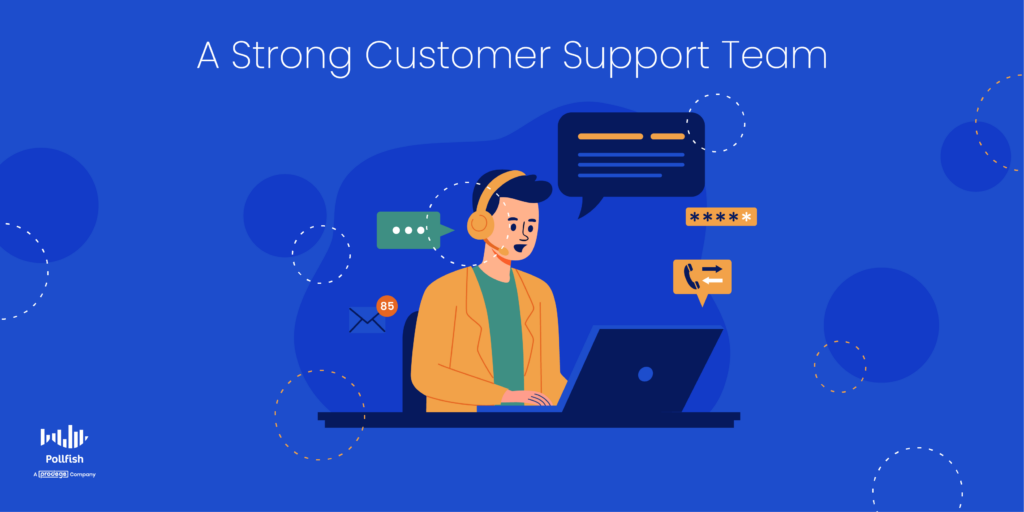 We have a full team ready to support you and answer all your questions at any time of the day (or night). Thus, you’ll never worry about making a mistake on our platform, as someone will always be there to help you.
We have a full team ready to support you and answer all your questions at any time of the day (or night). Thus, you’ll never worry about making a mistake on our platform, as someone will always be there to help you.
But there’s more. Our customer support team isn’t just there to answer questions or help with a roadblock. Instead, we have a team of experts that routinely checks surveys before they’re launched, ensuring you get the most quality results and don’t run into any technical hiccups.
A Multitude of Market Research Functionalities
A strong online market research platform provides more than just survey creation and a survey distribution service. It also goes beyond offering a robust set of templates and question types. At least that’s what you can expect with Pollfish.
We’re not just a survey platform. We offer a full scope of market research functionalities
Pollfish provides a diverse suite of market research products all under one platform. While we’re generally most known for surveys, we also provide other market research methods and campaign types.
We offer the following market research methods on the Pollfish market research platform:
- Monadic A/B testing and sequential A/B testing.
- A/B tests can be used to compare product concepts, communication ideas, or specific ads using equally structured groups of participants.
- With Monadic A/B testing, your respondents will claim their preferences for one concept that they will get randomly. This is just one of the many that the researcher wants to test and compare, instead of being exposed to two or more concepts at once.
- In sequential A/B testing, researchers can test multiple concepts at once, as opposed to just one with the monadic version.
- Maxdiff Analysis
- This is also called the Best-Worst Scale; a Maxdiff Analysis is a means for prioritizing new product ideas and tailoring them to consumer preferences.
- Respondents choose the best and the worst option from a given set of options, which relate to a product and its features.
- Respondents rate a list of items by selecting only two of them — the complete opposite of each other, labeling one as the best of the list and one as the worst.
- This technique allows you to identify what your target market values and what it detests.
- The Van Westendorp Pricing Model
- The Van Westendorp Price Sensitivity Meter is a pricing model that provides data to make decisions on product pricing, based on consumer price preferences.
- It is used to determine customers’ willingness to pay a range of prices.
- In doing so, it helps conclude the prices that your target market deems acceptable, too high, too low and optimal.
- Conjoint Analysis
- A conjoint analysis allows researchers to measure the value that consumers place on various aspects of a product or service.
- It shows exactly how your customers perceive the makeup of your offerings.
- It also reveals the distinct advantages and imperfections of your product features.
- This method breaks a product or service down by its components, called attributes and levels. Researchers can test different combinations of the components to identify consumer preferences.
Satisfying All Your Research Endeavors
A strong market research company will allow you to easily carry out and fulfill your market research goals. That’s why we suggest using a strong online survey platform, one that is capable of all the functions and services discussed in this article.
Remember, an online market research campaign is only as effective as the platform you use to operate it and not all market research platforms offer the same capabilities and customer support.
We advise you to use a trustworthy online survey platform, one that is rich in functions and features, along with a trusted survey distribution method like RDE.
You should therefore select your survey platform carefully.
Pollfish survey software allows you to create a thorough survey data collection, one you can customize to your liking, view however you please and organize to the max.
In addition, with our vast array of question types, you can create virtually any type of online market research survey to support your research campaigns.
Researchers can leverage a wide range of information on their respondents by accessing a wide pool of insights in their survey results dashboard.
Thanks to our advanced market research platform, you can form and excel at any market research campaign, no matter how difficult it may seem at first glance.
Automating Text Insertion in Pollfish Surveys with the Recall Information & Carry Answers From Features
Automating Text Insertion: Using the Pollfish Recall Information & Carry Answers From Features
Pollfish offers powerful automation features that allow you to dynamically insert text into survey questions and answers.
These features help personalize surveys, improve respondent experience, and streamline survey creation.
This guide covers the two primary methods for automating text insertion: Recall Information and Carry Answers From.
1. Recall Information Feature
The Recall Information feature allows you to reference a respondent's previous answer within a later question. This helps create a more seamless survey experience by making questions feel more tailored and relevant.
How It Works:
- This feature pulls responses from an earlier question and dynamically inserts them into subsequent questions.
- The recalled text appears in brackets
{}where it will be inserted. - You can recall text from all question types, including:
- Open-ended questions
- Multiple-choice and single-choice questions
- Matrices such as:
- Single Matrix
- Multiple Matrix
- BiPolar Matrix
- Van Westendorp Pricing Meter
Example:
- Q1: What is your favorite beverage? (Open-ended)
- Q2: You mentioned
{Q1}as your favorite beverage. How often do you drink it?
If the respondent answered "Coffee" in Q1, the follow-up question would appear as:
You mentioned Coffee as your favorite beverage. How often do you drink it?
2. Carry Answers From Feature
The Carry Answers From feature allows you to pipe selected answers, unselected answers, or all answers from a previous question into a following question. This makes it highly flexible for customizing follow-up questions based on user selections.
How It Works:
- You can choose to carry over only selected answers, unselected answers, or all answers.
- These answers will be displayed dynamically in the follow-up question.
- This works best for single-choice or multiple-choice questions.
Example:
- Q1: Which of these snacks do you like? (Multiple-choice: Chips, Popcorn, Pretzels, Cookies)
- Q2: You liked
{selected from Q1}. Which is your favorite?
If the respondent selected "Chips" and "Popcorn" in Q1, Q2 would be displayed as:
You liked Chips and Popcorn. Which is your favorite?
Alternatively, if using {unselected from Q1}, it would display:
You didn’t choose Pretzels and Cookies. Would you consider them?
Key Benefits of These Features
- Personalization: Makes surveys feel more conversational and engaging.
- Efficiency: Reduces the need for redundant questions and manual survey customization.
- Flexibility: Supports different response types and conditions to tailor survey flows.
Where to Find These Features
- While designing your survey, navigate to the question where you want to insert dynamic text.
- Click on the "Recall Information" or "Carry Answers From" option in the left menu bar
- Select the relevant previous question.
- Choose whether to recall specific responses or pipe selected/unselected/all answers.
- Preview your survey to ensure the logic flows correctly.
By leveraging Recall Information and Carry Answers From, you can create more interactive and customized surveys, enhancing both respondent engagement and data quality.
Related Reading
We also offer another critical feature for building your surveys: the advanced skip logic feature, which routes respondents to relevant follow-up questions based on their previous answers.


